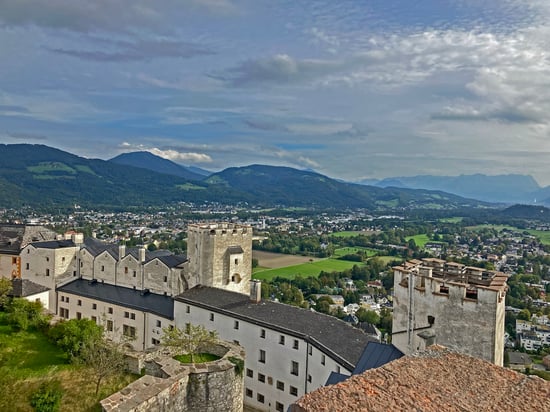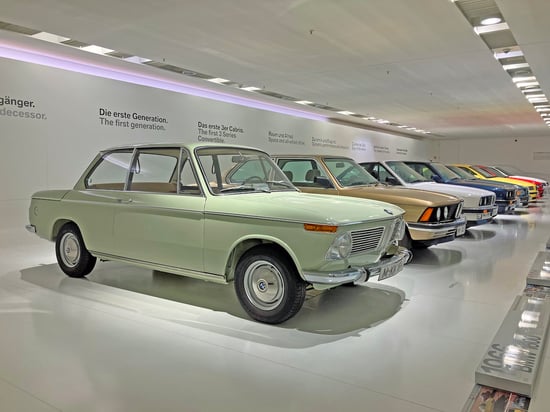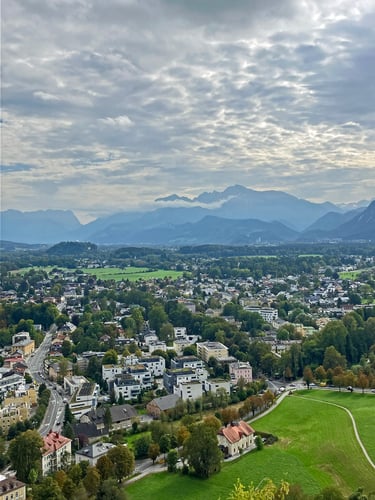
Vienna
So you're planning a trip to Vienna? Dive into our comprehensive Vienna travel guide guide covering everything you need to know about the City of Music and the must-do experiences awaiting you.
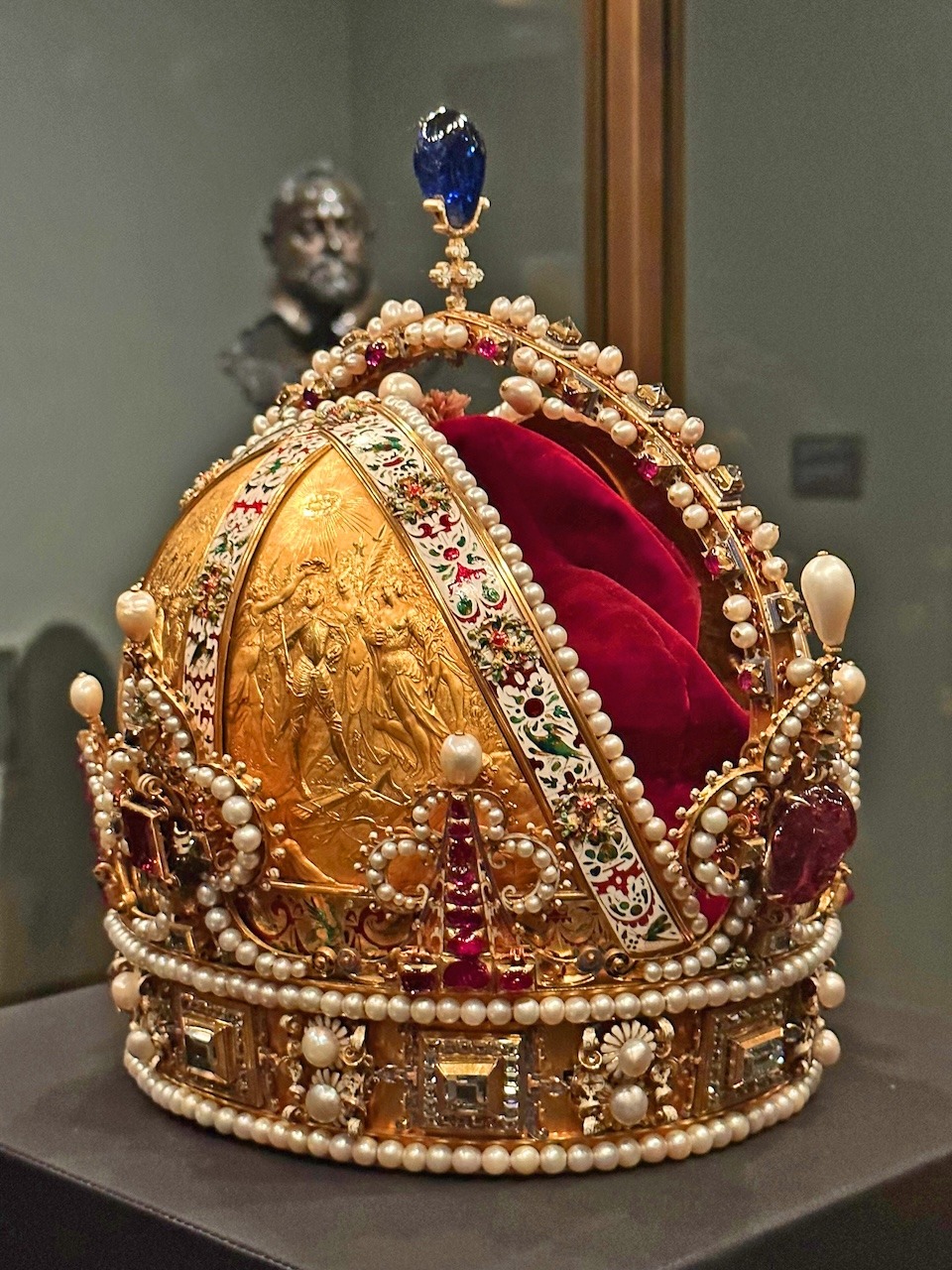

Vienna Travel Guide
An Introduction
Welcome to Vienna, the enchanting capital of Austria, where history and opulence create a city like no other. As you stroll through its streets, you will be transported through time, from the grandeur of the Habsburg Empire to the vibrant, cosmopolitan city it is today. Vienna's rich cultural heritage is on full display, with its magnificent architecture, world-renowned music scene, and exquisite art museums. Whether you are a history buff, an art lover, a foodie, or simply a traveler in search of new experiences, Vienna has something to offer everyone.
Vienna's skyline is punctuated by the spires of Gothic cathedrals and Baroque palaces. The city's heart, the Innere Stadt, is a UNESCO World Heritage site brimming with iconic landmarks such as St. Stephen's Cathedral, the Hofburg Palace, and the Vienna State Opera. Wander through the cobblestone streets, and you will discover hidden courtyards, charming coffeehouses, and bustling markets.
Music flows through Vienna's veins, earning it the nickname "The City of Music." This is the city where Mozart, Beethoven, and Strauss lived and composed their masterpieces. Today, Vienna continues to celebrate its musical legacy with concerts and opera performances that attract visitors from around the globe.
As you plan your visit to Vienna, prepare to be captivated by its elegance, charmed by its traditions, and inspired by its creativity. Here is a glimpse of what makes Vienna truly unique:
- UNESCO World Heritage Sites: Vienna boasts two UNESCO World Heritage Sites – the historic city center and Schönbrunn Palace.
- Coffeehouse Culture: Vienna's coffeehouse culture is so iconic that it is listed as an "Intangible Cultural Heritage" by UNESCO.
- World’s Oldest Zoo: Tiergarten Schönbrunn, located within the Schönbrunn Palace grounds, is the world’s oldest continuously operating zoo, founded in 1752.
- Music Hub: Vienna hosts over 15,000 concerts annually, showcasing a diverse range of musical genres and performers.
Vienna Travel Guide: Quick Tips
Vienna Travel Guide: Can't Miss Attractions
Embark on an enchanting journey through Vienna's timeless treasures, from the architectural splendor of St. Stephen's Cathedral to the opulent Imperial Treasury. Explore the grandeur of Schönbrunn Palace, marvel at the masterpieces in the Kunsthistorisches Museum, and step back into history at the Hofburg Imperial Apartments and Sisi Museum. Experience world-class performances at the Vienna State Opera and indulge in the decadent Sachertorte at the historic Café Sacher. These captivating attractions collectively epitomize the magic of this historic Austrian gem.
We've highlighted all the attractions we visited and adored with the universal symbol of love, ♡.
- St. Stephen's Cathedral (Domkirche St. Stephan): ♡ St. Stephen's Cathedral, called Domkirche St. Stephan in German, is an iconic Gothic masterpiece in the heart of Vienna. This architectural marvel, with its towering spire and multi-colored tiled roof which forms intricate patterns, serves as both a historical landmark and a symbol of the city's enduring religious heritage.
- Imperial Treasury (Kaiserliche Schatzkammer): ♡ The Imperial Treasury, located within the Hofburg Palace, houses a stunning collection of Habsburg treasures, including the Austrian imperial crown, the Holy Roman Empire's imperial regalia, and various priceless jewels and artifacts.
- Schönbrunn Palace (Schloss Schönbrunn): ♡ Schönbrunn Palace, a UNESCO World Heritage Site, is a stunning Baroque palace that served as the summer residence of the Habsburg emperors. With its 1,441 rooms and beautifully landscaped gardens, it offers an extraordinary glimpse into the opulent lifestyle and cultural heritage of imperial Austria.
- Kunsthistorisches Museum: ♡ The Kunsthistorisches Museum is one of the most important art museums in the world, located in Vienna on the Ringstraße. Housed in a grand neoclassical building, it boasts an extensive collection of artworks spanning centuries and continents, including masterpieces by renowned artists such as Raphael, Velázquez, Caravaggio, Vermeer, and Rembrandt.
- The Hofburg Imperial Apartments & Sisi Museum: The Homburg Imperial Apartments and Sisi Museum, located within the Hofburg Palace, offer a fascinating glimpse into the life of Empress Elisabeth (Siri) of Austria and Emperor Franz Joseph I. The Sisi Museum showcases some of Sisi's personal items, including dresses, letters, and belongings, shedding light on her personality, struggles, and influence on Austrian society. The adjoining Imperial Apartments, once the private quarters of Emperor Franz Joseph I and Empress Elisabeth, are beautifully preserved, showcasing the luxurious lifestyle of the Habsburg imperial family.
- Vienna State Opera House (Wiener Staatsoper): The Vienna State Opera House, known as the Wiener Staatsoper, is one of the world's leading opera houses. Situated in the heart of Vienna, the opera house has been a cultural centerpiece since its opening in 1869, hosting legendary composers, conductors, and opera singers throughout its history. Its opulent interior, with lavish decorations and plush seating, provides an immersive experience for opera enthusiasts and newcomers alike.
- Café Sacher Wien: Café Sacher, located at the upscale Hotel Sacher, is famous for its namesake Sachertorte, a rich chocolate cake with apricot jam and chocolate glaze, created in 1832. No trip to Vienna would be complete without a visit to this historic café.
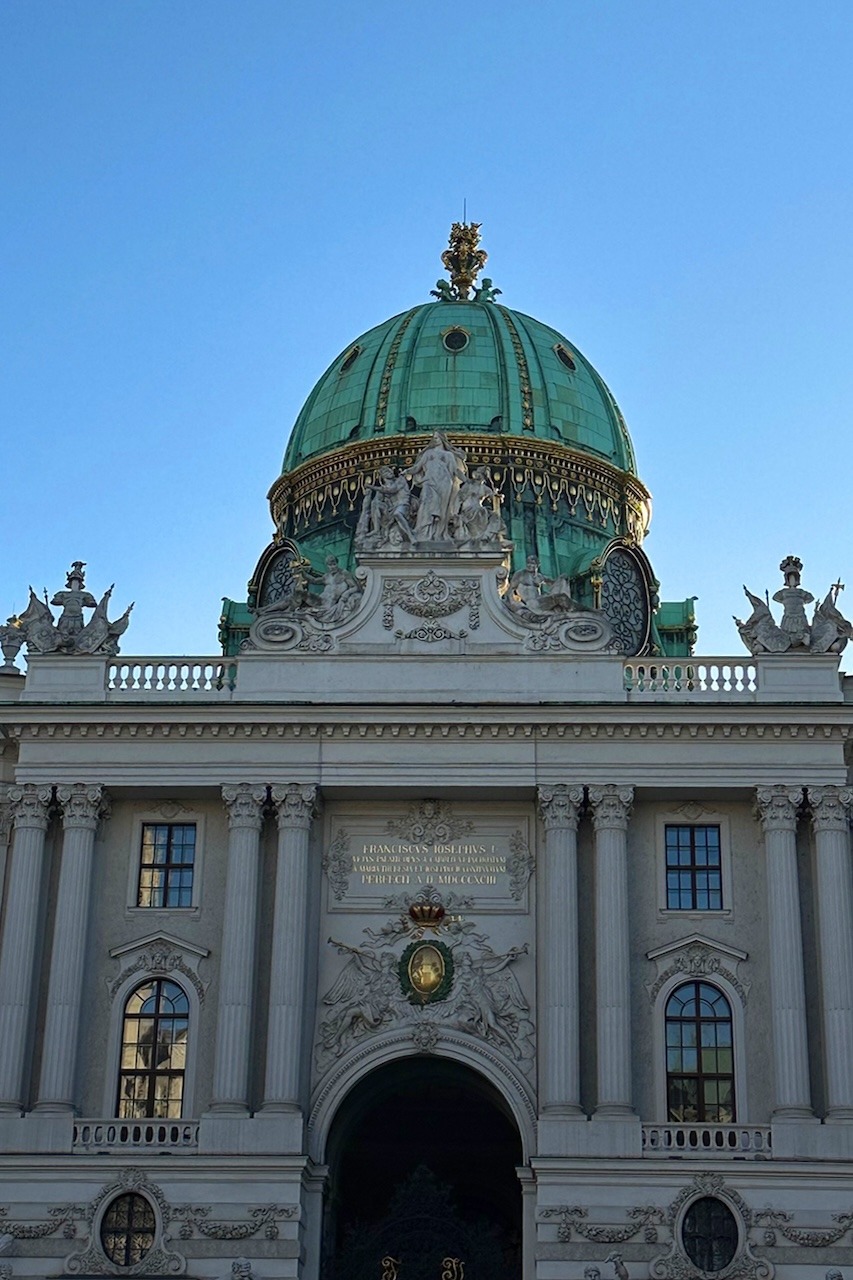
Vienna Travel Guide: Landmarks
Vienna State Opera House
(Wiener Staatsoper)
The Vienna State Opera House (Wiener Staatsoper) is one of the most renowned opera houses in the world, celebrated for its exceptional acoustics, grand architecture, and rich musical tradition. Located on the Ringstraße in the heart of Vienna, the opera house was completed in 1869 and was the first major building on this grand boulevard.
Designed in the Neo-Renaissance style, the Vienna State Opera House boasts a stunning façade, lavishly ornate interior, and a magnificent auditorium that seats over 1,700 people. The grand staircase, adorned with marble statues and intricate frescoes, leads to the elegant foyers and the main auditorium, which is adorned with plush red seats, golden decorations, and a large chandelier.
The Vienna State Opera House is known for its extensive and varied schedule, staging more than 350 performances a year, including operas, ballets, and concerts. It attracts leading singers, conductors, and musicians from around the world, making it a hub for both traditional and contemporary productions. For individuals eager to experience a live performance at the Vienna State Opera House, details on forthcoming shows and ticket acquisition options are available on the Vienna State Opera House website.
For those interested in the building's history and architecture, guided tours are also available, offering a behind-the-scenes look at the opera house's ornate rooms, backstage areas, and the intricate workings of its stage machinery. The Vienna State Opera House remains a symbol of Vienna's cultural heritage and a must-visit destination for music and architecture enthusiasts alike.
Stephansplatz
Stephansplatz is the central square in Vienna. It is dominated by St. Stephen's Cathedral, a Gothic masterpiece and one of the city's most iconic landmarks. The square is a bustling area filled with shops, cafes, and street performers, offering a lively atmosphere day and night. Stephansplatz also serves as a key transportation hub with access to multiple U-Bahn lines, making it an ideal starting point for exploring Vienna's many attractions.
Minoritenplatz
Minoritenplatz is a historic square in Vienna known for its elegant architecture and significant government buildings. The square is named after the Minorite Church (Minoritenkirche), a beautiful Gothic church that dates back to the 14th century and is one of the oldest in the city. Minoritenplatz is surrounded by government offices. The square offers a more tranquil atmosphere compared to the bustling Stephansplatz, making it a peaceful spot to admire Vienna's historical and architectural heritage.
Heldenplatz (Heroes' Square)
Heldenplatz, or Heroes' Square, is a grand public space in Vienna located in front of the Hofburg Palace. It is known for its impressive architecture and monumental statues of Archduke Charles of Austria and Prince Eugene of Savoy, both celebrated military leaders. Heldenplatz has been the site of numerous historical events, including Adolf Hitler's 1938 speech marking Austria's annexation by Nazi Germany. Today, Heldenplatz is a popular tourist destination, offering great views of the Hofburg Palace and serving as a gateway to the adjacent Volksgarten and the Ringstraße boulevard.
Michaelerplatz
Michaelerplatz is a historic and picturesque square in Vienna, located at one of the main entrances to the Hofburg Palace. It is named after St. Michael's Church (Michaelerkirche), a beautiful Gothic church that dates back to the 13th century. The square is renowned for its impressive architecture, including the grand Michaelertrakt, an elegant wing of the Hofburg Palace featuring a magnificent dome. Michaelerplatz is also home to archaeological excavations that reveal remnants of Roman Vienna, adding a layer of ancient history to the area. The square's central location and its blend of historical and architectural landmarks make it a popular spot for tourists exploring Vienna's rich heritage.
Danube River
The Danube River is a significant natural feature that flows through Vienna. It is the second-longest river in Europe, and its presence has shaped Vienna's history, trade, and culture. Along the river, you'll find the Danube Island (Donauinsel), a long, narrow island that serves as a popular recreational area with beaches, cycling paths, and parks. The riverbanks are lined with picturesque promenades, cafes, and boat tour operators, offering beautiful views of the city and the surrounding landscapes. Whether for leisure, sport, or simply enjoying the scenic vistas, the Danube River plays a vital role in the life and charm of Vienna.
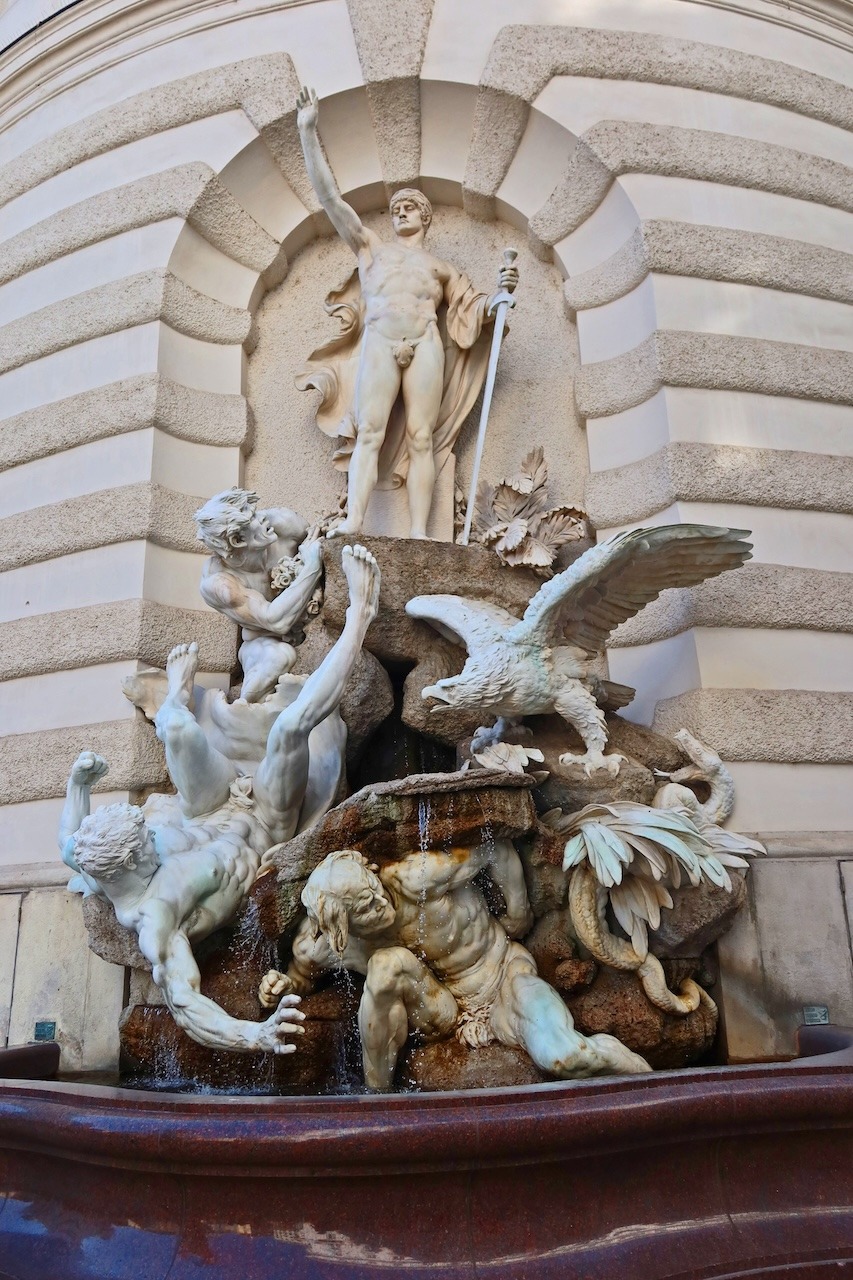
Vienna Travel Guide: Top Museums
Vienna boasts a diverse array of museums, each filled with cultural, historical, and artistic wonders. As operating times and holiday closures can differ among these institutions, visitors are advised to check the official websites of each museum for the most up-to-date hours and any unexpected closures.
For the art aficionado:
- Kunsthistorisches Museum: ♡ The Kunsthistorisches Museum is one of the world's most esteemed art museums, renowned for its vast and diverse collection of artworks and artifacts. The museum, housed in a magnificent Renaissance Revival style building, was opened by Emperor Franz Joseph I in 1891, near the Hofburg Palace.
A large portion of the museum's collection is European art from the Renaissance to the Baroque periods. Notable highlights include masterpieces by some of the most celebrated artists in history. Among these are a collection of paintings by Diego Velázquez, including his famous portrait "Infanta Margarita Teresa in a Blue Dress," which showcases his masterful use of color and light. Velázquez's paintings stand out as a must-see at the Kunsthistorisches Museum, offering a rare glimpse outside of Spain into the Velázquez's extraordinary talent. The ties between the Spanish royal family and the Habsburgs were deep and personal, mirrored in the portraits sent from Spain. These pieces of art were akin to today's practice of sharing family photos with loved ones across borders, a testament to their intertwined lineages and shared histories. The museum also houses an exquisite portrait of Marie Antoinette by Élisabeth Louise Vigée Le Brun, one of the most famous female artist of her time, capturing the elegance and poise of the ill-fated last French queen.
In addition to these works, the Kunsthistorisches Museum boasts an extensive collection of paintings by Pieter Bruegel the Elder, including "The Tower of Babel" and "The Hunters in the Snow," which are considered among the finest examples of Northern Renaissance art. The museum also features significant works by artists such as Peter Paul Rubens, including "The Four Continents" and "The Miracles of St. Francis Xavier."
With its opulent architecture, including a grand staircase adorned with frescoes by Gustav Klimt, and its unrivaled collection of art and artifacts, the Kunsthistorisches Museum offers an enriching and immersive experience for art lovers and history enthusiasts alike. If you are looking to also visit the Imperial Treasury, combination tickets which include admission to both the Imperial Treasury and the Kunsthistorisches Museum are available. - Albertina: ♡ The Albertina Museum is one of the city’s premier cultural institutions, renowned for its extensive collection of graphic art, photography, and modern art. Housed in a grand neoclassical palace, the Albertina boasts an impressive array of works spanning several centuries and artistic movements. The museum's collection includes over a million prints and 60,000 drawings, featuring masterpieces by artists such as Albrecht Dürer, whose famous watercolor piece "Hare" is a highlight. The Albertina also holds significant works by Raphael and Michelangelo Buonarroti.
The Albertina is also home to the Batliner Collection, which includes notable works of Impressionism and early 20th-century art. Visitors can admire paintings by Claude Monet and Edgar Degas, as well as modernist works by Pablo Picasso and René Magritte. The museum also showcases contemporary art and photography, offering a comprehensive view of artistic development from the Renaissance to the present day.
The Albertina's rich history is reflected in its origins as a palace - Tarouca Palace - and visitors can still explore the elegant State Rooms. These apartments, once the residence of Habsburg archdukes and archduchesses, add a historical and architectural dimension to the museum experience, featuring beautifully restored interiors and furnishing that provide a glimpse into the opulent lifestyle of the Austrian aristocracy without the crowds of the Schönbrunn Palace or the Hofburg. - MAK - Austrian Museum of Applied Arts/Contemporary Arts: The MAK - Austrian Museum of Applied Arts/Contemporary Arts, known simply as the MAK, is a prominent museum in Vienna dedicated to showcasing applied arts, design, and contemporary art. Founded in 1863, the museum has a rich history and is housed in a stunning historic building on Stubenring.
The museum's collection spans a wide range of disciplines, including furniture, textiles, ceramics, glassware, jewelry, and graphic design. It features objects from various periods, from the Middle Ages to the present day, representing different artistic movements and cultural influences. The MAK's permanent collection includes works by prominent designers and artists such as Gustav Klimt.
The MAK is also known for its focus on contemporary art and design. The museum regularly hosts temporary exhibitions showcasing innovative works by emerging and established artists, exploring themes such as sustainability, technology, and social issues. Additionally, the MAK is home to the MAK Design Lab, a space dedicated to exploring experimental design concepts and interactive installations.
With its diverse collection, dynamic exhibitions, and commitment to promoting creativity and innovation, the MAK is a vibrant cultural hub that attracts visitors interested in art, design, and cultural history. - Leopold Museum: The Leopold Museum is a museum dedicated to modern Austrian art, particularly focusing on the works of the Vienna Secession movement and artists of the early 20th century. The museum is located in the MuseumsQuartier, a vibrant cultural complex in the heart of Vienna.
The Leopold Museum houses an extensive collection of paintings, sculptures, and graphic art from the late 19th century to the present day. It is named after Rudolf and Elisabeth Leopold, whose private collection formed the basis of the museum's holdings. The collection includes works by prominent Austrian artists such as Gustav Klimt, Egon Schiele, Oskar Kokoschka, Richard Gerstl, and Koloman Moser, among others.
One of the highlights of the Leopold Museum is its exceptional collection of works by Egon Schiele, including numerous paintings, drawings, and prints that showcase the artist's distinctive style and exploration of human emotions and sexuality. The museum also features works from the Vienna Secession movement, including an iconic piece by Gustav Klimt - "Death and Life." - Mumok (Museum Moderner Kunst Stiftung Ludwig Wien): MUMOK, short for Museum Moderner Kunst Stiftung Ludwig Wien, is Vienna's leading museum for modern and contemporary art. Located in the MuseumsQuartier, MUMOK is known for its impressive collection of artworks from the 20th and 21st centuries, showcasing various artistic movements and styles.
The museum's collection encompasses a wide range of media, including painting, sculpture, photography, video art, installations, and multimedia works. It features works by internationally renowned artists such as Pablo Picasso, Andy Warhol, and Jackson Pollock, as well as prominent Austrian artists like Maria Lassnig.
MUMOK's focus on modern and contemporary art allows visitors to explore the evolution of artistic expression and cultural trends over the past century. The museum's exhibitions cover diverse themes and topics, addressing social, political, and philosophical issues through the lens of contemporary art.
The architecture of MUMOK is also noteworthy, with its striking black basalt façade. In addition to its permanent collection, MUMOK regularly organizes temporary exhibitions, lectures, workshops, and performances, making it a dynamic hub for artistic discourse and cultural exchange. - Museum Hundertwasser im KunstHausWien: Museum Hundertwasser im KunstHausWien is a unique museum and art space dedicated to the work of the visionary Austrian artist and architect Friedensreich Hundertwasser. Opened in 1991, the museum is housed in a former furniture factory that was transformed by Hundertwasser's distinct and whimsical design.
The building itself is a work of art, featuring irregular forms, vibrant colors, uneven floors, and a rooftop garden, embodying Hundertwasser's philosophy of harmony with nature and rejection of straight lines.
The museum's permanent collection includes a comprehensive selection of Hundertwasser's works, spanning his paintings, graphic art, architectural designs, and tapestries. It showcases his innovative approach to art and architecture, emphasizing ecological sustainability, individuality, and the integration of natural elements. - Belvedere 21: Belvedere 21 is a contemporary art museum that is part of the Belvedere museum complex. Originally designed as the Austrian pavilion for the 1958 Brussels World’s Fair, the building was later relocated to Vienna and opened as the Museum of the Twentieth Century in 1962. In 2011, it was renamed Belvedere 21 and underwent extensive renovations to enhance its exhibition spaces and visitor amenities.
Belvedere 21 focuses on Austrian art from the post-war period to the present, offering a dynamic platform for contemporary artists and fostering a dialogue between modern and contemporary art. The museum's collection includes works by key figures in Austrian art, such as Maria Lassnig, Günter Brus, and VALIE EXPORT, alongside international contemporary artists.
For the history lover:
- Imperial Treasury (Kaiserliche Schatzkammer): ♡ The Imperial Treasury is located within the Hofburg Palace complex and is one of the most important repositories of royal regalia and artifacts in the world. It houses a stunning collection of treasures that span over a thousand years of European history, showcasing the wealth and power of the Habsburg dynasty.
Among the notable items in the collection are the Imperial Crown of the Holy Roman Empire, the Austrian Imperial Crown, and the Orb and Sceptre, symbols of the Habsburg's authority and influence. The treasury also includes the Burgundian Treasure, an exquisite assortment of medieval jewels and ceremonial objects, and the Holy Lance, a relic believed to have pierced the side of Christ.
Additionally, the treasury features a variety of precious items such as intricately crafted swords, elaborate garments, and stunning works of goldsmithing and enameling.
Visiting the Vienna Imperial Treasury offers a fascinating glimpse into the opulence and grandeur of the Habsburgs, providing a deeper understanding of European history and the enduring legacy of one of its most powerful dynasties. - The Hofburg Imperial Apartments & Sisi Museum: The Hofburg Imperial Apartments, located within the sprawling Hofburg Palace complex, were the official residence of the Habsburg emperors in the heart of Vienna. These lavishly furnished rooms provide a vivid insight into the daily lives of Emperor Franz Joseph I and Empress Elisabeth during the late 19th century. Visitors can explore various rooms, including the audience chamber, conference room, and private apartments, each meticulously decorated with luxurious furnishings, exquisite tapestries, and elegant chandeliers.
Adjacent to the Imperial Apartments, the Sisi Museum is dedicated to the life and legacy of Empress Elisabeth (Sisi). The museum delves into the personal and often enigmatic life of Sisi, who was known for her beauty, rebellious spirit, and tragic fate. The exhibition features numerous personal artifacts, including her dresses, parasols, gloves, and beauty products, as well as letters and poetry written by the empress.
The museum's narrative explores various facets of Sisi's life, from her early years as a Bavarian duchess to her marriage to Emperor Franz Joseph, her struggles with court life, and her fascination with beauty and physical fitness. It also touches on her deep personal tragedies, including the death of her son, Crown Prince Rudolf, and her own assassination in 1898.
Through its detailed exhibits and displays, the Sisi Museum offers a comprehensive portrait of one of Austria's most iconic and beloved figures. Combined with a visit to the Hofburg Imperial Apartments, it provides a rich and immersive experience, allowing visitors to step back in time and explore the grandeur, drama, and intimate aspects of imperial life in Vienna. - Schönbrunn Palace (Schloss Schönbrunn): ♡ Schönbrunn Palace, is one of Vienna's most significant cultural, historical, and architectural landmarks. This grand baroque palace, located in the Hietzing district, served as the summer residence of the Habsburg emperors and is recognized as a UNESCO World Heritage Site. The origins of Schönbrunn Palace date back to the late 16th century when it was initially built as a hunting lodge for the Habsburgs. The current baroque palace was commissioned by Emperor Leopold I in the early 18th century. Empress Maria Theresa, one of the most influential Habsburg rulers, later expanded and transformed the palace into the magnificent residence seen today. The palace features an impressive façade and beautifully decorated interiors, reflecting the opulence and grandeur of the Baroque and Rococo styles. With 1,441 rooms, including state apartments, private quarters, and lavish ceremonial rooms, Schönbrunn offers a fascinating glimpse into the luxurious lifestyle of the imperial family. Highlights include the Great Gallery, a grand hall used for balls, ceremonies, and receptions, adorned with stunning ceiling frescoes, chandeliers, and gilded stucco work; the Hall of Mirrors, famous for its intricate mirrors and elegant decor, used for intimate gatherings and musical performances, including a concerts by the young Wolfgang Amadeus Mozart for Empress Maria Theresa in 1762; and the Blue Chinese Salon, featuring delicate blue and white Chinese porcelain, used for private meetings and small receptions.
The extensive gardens surrounding Schönbrunn Palace are a masterpiece of baroque landscape design, laid out in the formal French style. Visitors to Schönbrunn Palace can explore the opulent state rooms, stroll through the meticulously maintained gardens, and enjoy the numerous attractions on the palace grounds. Guided tours and audio tours are available, offering in-depth insights into the history and significance of the palace and its inhabitants. The Schönbrunn Orangery is also home to daily classical music concerts. Additional information about upcoming concerts can be found on the palace concerts website. - Belvedere Palace (Schloss Belvedere): Belvedere Palace is a historic baroque palace complex in Vienna, consisting of two main buildings: the Upper Belvedere (Oberes Belvedere) and the Lower Belvedere (Unteres Belvedere), along with expansive gardens. Commissioned by Prince Eugene of Savoy, a prominent military leader and art patron, the palace was constructed in the early 18th century as a summer residence.
The Upper Belvedere is renowned for its stunning architecture and houses one of the most important art collections in Austria. Its magnificent façade and opulent interiors exemplify the grandeur of baroque design. The art collection within includes masterpieces from the Middle Ages to the present day, with a strong focus on Austrian art. Highlights include works by Gustav Klimt, such as his iconic painting "The Kiss," "Napoleon at the Great St Bernard" by Jacques Louis David, as well as pieces by Egon Schiele and Ferdinand Georg Waldmüller.
The Lower Belvedere, initially used as Prince Eugene's living quarters and for official functions, now serves as an exhibition space for temporary art shows and special exhibitions. Its historical rooms, such as the Marble Gallery and the Hall of Grotesques, showcase the lavish decorative arts of the baroque era.
The gardens between the Upper and Lower Belvedere are equally impressive, designed in the formal French style with symmetrical layouts, ornamental fountains, sculptures, and well-maintained flowerbeds. These gardens provide a scenic and serene environment, offering spectacular views of the palace buildings and the city of Vienna.
In addition to its art and architecture, Schloss Belvedere is also significant for its historical importance. The Upper Belvedere served as the home of the Archduke Franz Ferdinand before his assassination in 1914. The Upper Belvedere's Marble Hall was also the site where the State Treaty for the Re-establishment of an Independent and Democratic Austria was signed in 1955, restoring Austria's independence after World War II. - Naturhistorisches Museum (Museum of Natural History): The Naturhistorisches Museum, or the Museum of Natural History, in Vienna is one of the most significant natural history museums in the world. Located on the Ringstraße, directly opposite the Kunsthistorisches Museum, the museum's grandiose architecture and extensive collections make it a must-visit destination for anyone interested in the natural sciences. Commissioned by Emperor Franz Joseph I, the museum opened its doors to the public in 1889. The architecture reflects the opulent style of the late 19th century, featuring a grand façade adorned with sculptures and intricate details, while the interior boasts elaborately decorated halls and exhibition spaces that enhance the visitor experience.
The museum's collections are vast and diverse, covering various aspects of natural history, including mineralogy, paleontology, anthropology, and zoology. With over 30 million objects, the exhibits provide an in-depth look at Earth's history and the diversity of life. Highlights include the Venus of Willendorf, a small, 29,500-year-old figurine representing a fertility goddess; the dinosaur hall with life-sized skeletons and models of species like Allosaurus and Iguanodon; and the gem and mineral collection showcasing a stunning array of gems, minerals, and meteorites. The anthropological section traces human evolution and cultural development, while the biodiversity and environmental exhibits highlight the diversity of life and the importance of conservation. - Imperial Carriage Museum (Kaiserliche Wagenburg): The Imperial Carriage Museum (Kaiserliche Wagenburg) in Vienna, situated within the grounds of Schönbrunn Palace, is a captivating testament to the opulent world of the Habsburgs. Established in 1922, this museum showcases over 170 historical carriages, sleighs, and harnesses that once belonged to the Austrian imperial family. Its collection spans from the Baroque era to the early 20th century.
Among the museum's highlights is the gilded Imperial Coach, used for Emperor Charles VI's coronation in 1711, featuring intricate carvings and gilded sculptures. The Golden Carriage of Empress Maria Theresa is another highlight of the museum's collection, renowned for its luxurious design and gold-plated decorations. Additionally, visitors can explore personal carriages used by imperial children, providing a glimpse into the daily life of the Habsburg family. Notably, the museum features several carriages used by Empress Elisabeth (Sisi), including her funeral hearse.
Set within the former Winter Riding School of Schönbrunn Palace, the Imperial Carriage Museum's special exhibitions delve deeper into various aspects of imperial transportation and Habsburg history, making it a captivating destination for those fascinated by royal history and the grandeur of the Habsburg dynasty.
For families:
- Schönbrunn Zoo (Tiergarten Schönbrunn): The Schönbrunn Zoo, known as Tiergarten Schönbrunn in German, is situated within the historic Schönbrunn Palace grounds in Vienna. Schönbrunn Zoo holds a prestigious position as one of the world's oldest and most esteemed zoological institutions. Established in 1752 under Emperor Franz I, Stephan of Lorraine, the zoo initially served as an imperial menagerie, showcasing exotic animals to symbolize imperial power. Over time, it evolved into a modern zoo with a strong emphasis on wildlife conservation, education, and scientific research, contributing significantly to global efforts in preserving biodiversity.
At the heart of the zoo's mission is its diverse collection of animal species from various corners of the world, housed in habitats designed to closely resemble their natural environments. Notable highlights of the zoo's exhibits include the Panda Garden, where visitors can observe giant pandas on loan from China. The Polarium enchants visitors with arctic and antarctic species like polar bears and penguins, while the Rainforest House immerses guests in the vibrant biodiversity of tropical ecosystems.Whether it's observing iconic animals in their habitats, learning about conservation efforts, or participating in educational activities, a visit to the Schönbrunn Zoo offers a unique blend of entertainment, education, and conservation advocacy for visitors of all ages.
- ZOOM Kindermuseum: The ZOOM Kindermuseum is an interactive museum designed for children, offering a dynamic environment where they can play, learn, and explore creatively. Through hands-on exhibits and activities, the museum stimulates children's curiosity, imagination, and critical thinking skills. With themed exploration zones covering topics like science, art, culture, and history, children can engage in interactive experiments, art workshops, and collaborative projects that encourage active learning and social interaction. The museum's educational approach emphasizes learning through play, fostering a love for exploration and creativity among young visitors.
- HAUS DER MUSIK: HAUS DER MUSIK is an interactive museum that delves into the world of music. Its immersive design offers a modern and engaging experience for visitors of all ages, exploring the intricate history, scientific nuances, and artistic depths of music. The museum's concept revolves around the multifaceted nature of music through a diverse range of interactive exhibits, multimedia installations, and hands-on experiences.
Among its highlights is the Sound Lab, where visitors can unravel the physics of sound, experiment with musical instruments, and even create their compositions. Composer stations dedicated to musical luminaries like Mozart, Beethoven, and Strauss provide insights into their lives and musical contributions. A virtual conductor exhibit allows visitors to take the baton and lead a virtual orchestra. Interactive installations throughout the museum invite visitors to explore rhythm, melody, harmony, and musical expression in creative and engaging ways.
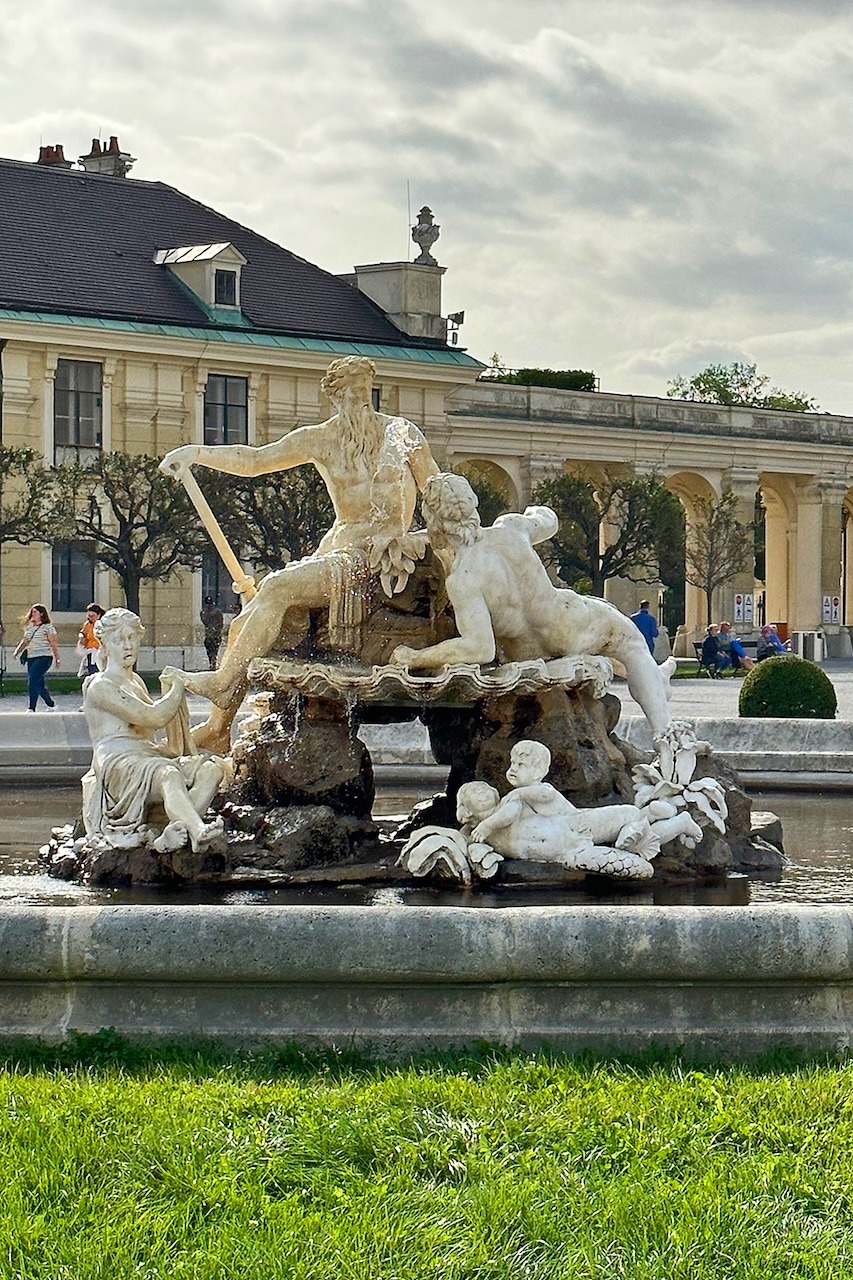
Vienna Travel Guide: Popular Churches
While Vienna is dotted with churches, we have curated a list of some of the most popular ones for visitors to explore.
St. Stephen's Cathedral (Domkirche St. Stephan) ♡
St. Stephen's Cathedral, or Domkirche St. Stephan in German, is not only Vienna's most famous landmark but it is also a symbol of the city's enduring cultural and historical significance. Initially constructed in 1137, the cathedral has been a focal point of Vienna's religious life for nearly a millennium. The current Gothic structure, completed in the 15th century, stands on the foundations of two earlier churches, incorporating Romanesque and Gothic elements.
The cathedral's exterior is dominated by its towering South Tower, known as the "Steffl," which reaches a height of 446 feet (136 meters) and offers a panoramic view of Vienna. The North Tower, although shorter, houses the Pummerin, one of the largest free-swinging bells in Europe, cast from the remains of cannons captured from the Ottoman Turks in 1683. Visitors can ascend to the top of the South Tower via 343 steps or take an elevator to the viewing platform of the North Tower. Both vantage points offer fantastic views of Vienna's historic center and beyond, making the climb well worth the effort.
One of the most remarkable features of St. Stephen's Cathedral is its roof, adorned with 230,000 colorful glazed tiles. These tiles create striking geometric patterns, including the iconic double-headed eagle, the symbol of the Habsburg dynasty, and the coats of arms of Vienna and Austria. This vibrant roof is visible from various vantage points across the city and adds to the cathedral's distinctive silhouette.
Inside, the cathedral is a trove of religious art and historical artifacts. The High Altar, completed in 1647, depicts the stoning of St. Stephen, the cathedral's patron saint. The intricately carved stone pulpit, known as the Pilgram Pulpit, features a self-portrait of its creator, Anton Pilgram, who ingeniously included his likeness peeking out from the stonework. Another self-portrait of a worker can be found in the cathedral, hidden among the ornate decorations, showcasing the artisans' personal connection to their work.
St. Peter's Church (Peterskirche)
St. Peter's Church in Vienna is a stunning Baroque church located in the heart of the city near Graben Street. Built in the early 18th century, it is renowned for its ornate interior, featuring elaborate frescoes, gilded stucco work, and a magnificent turreted dome. The church's impressive architecture and rich decorations make it a must-visit for those interested in Vienna's historical and religious heritage.
Classical music concerts, performed by the Classic Ensemble Vienna, are regularly held at St. Peter's Church. Additional information about the concerts, including upcoming performances and tickets, can be found on the Classic Ensemble Vienna website.
Church of St. Augustine (Augustinerkirche)
The Church of St. Augustine, is a historic church in Vienna located near the Hofburg Palace. Originally built in the 14th century, it features a Gothic architectural style and is known for its long association with the Habsburg dynasty, serving as the site for many royal weddings and ceremonies. The church houses notable artworks, including the monument to Archduchess Maria Christina by Antonio Canova.
Each Sunday morning at 11:00 AM, the Church of St. Augustine celebrates mass with live music, including a magnificent choir and orchestra. If you plan to attend, arrive early. There is no charge to visit the Church of St. Augustine for mass, but donations are appreciated.
Jesuit Church
Jesuitenkirche)
The Jesuit Church in Vienna is a magnificent Baroque church located in the old university quarter of the city. Constructed in the early 17th century, the church is known for its stunning interior decorations, including elaborate stucco work, ceiling frescoes, and trompe-l'œil paintings that create an illusion of architectural elements. The richly adorned high altar and the detailed pulpit are standout features.
Kapuzinergruft (Imperial Crypt at Capuchin Church, also called Kapuzinerkirche)
Kapuzinergruft, also known as the Imperial Crypt, is a burial chamber beneath the Capuchin Church in Vienna. Established in 1618, it serves as the final resting place for members of the Habsburg dynasty. The crypt houses elaborate sarcophagi and monuments, reflecting the Baroque and Rococo styles, and includes the tombs of notable figures such as Empress Maria Theresa and Emperor Franz Joseph I. The Kapuzinergruft offers a unique glimpse into the history and legacy of the Habsburgs, making it a significant site for those interested in Austria's imperial past.
Dominikanerkirche (Dominican Church also called the Church of St. Maria Rotunda)
Dominikanerkirche, also known as the Dominican Church or the Church of St. Maria Rotunda, is a beautiful Baroque church located in the Innere Stadt district. Built between 1631 and 1674, the church is known for its striking façade and richly decorated interior, which features elaborate stucco work, frescoes, and a stunning high altar adorned with statues of saints. The ceiling frescoes depict scenes from the lives of Our Lady and are a highlight of the church's artistic treasures. Dominikanerkirche's grandeur and artistic detail make it a noteworthy site for visitors exploring Vienna's ecclesiastical architecture and heritage.

Vienna Travel Guide: Gardens & Parks
Stadtpark (City Park)
Stadtpark in Vienna is one of the city's most beloved and picturesque parks, spanning over 16 acres (65,000 square meters) and located in the heart of the city. Established in 1862, it was Vienna's first public park and features a blend of English landscape garden style and formal gardens. The park is renowned for its greenery, beautifully maintained flower beds, and serene ponds.
One of the park's most famous landmarks is the gilded bronze statue of Johann Strauss II, the "Waltz King.". In addition to this iconic monument, Stadtpark is home to several other statues and memorials dedicated to notable Viennese artists, composers, and writers.
The park offers a tranquil retreat from the bustling city, with winding paths, expansive lawns, and shaded areas perfect for relaxation and leisurely strolls. Stadtpark also features a children's playground (Kinderpark), making it a popular spot for families. Additionally, the Kursalon, a historic concert hall located within the park, hosts classical music concerts and events, further enhancing the cultural experience for visitors.
Volksgarten (People's Garden)
Volksgarten in Vienna is a beautifully landscaped public park situated in the Innere Stadt district, adjacent to the Hofburg Palace. Established in 1823, it was designed in the French Baroque style and is renowned for its formal gardens, lush lawns, and serene atmosphere. The park is especially famous for its rose garden, which features over 3,000 rose bushes of various varieties, creating a stunning display of colors and fragrances, particularly in the spring and summer.
A prominent feature of Volksgarten is the Theseus Temple, a neoclassical structure modeled after the Temple of Hephaestus in Athens, Greece. The temple originally housed Antonio Canova's sculpture "Theseus and the Minotaur," but now serves as a venue for art exhibitions.
Volksgarten also includes several statues and monuments, including the Empress Elisabeth Memorial, dedicated to Empress Sisi. The park's elegant pathways, shaded benches, and well-kept flower beds make it a popular spot for both locals and tourists seeking a peaceful retreat in the heart of Vienna. Its proximity to other major attractions, such as the Hofburg Palace and the Austrian Parliament Building, makes Volksgarten a convenient and delightful stop for those exploring the city's historic center.
Belvedere Palace Gardens
The Belvedere Palace Gardens are an exquisite example of Baroque landscape design, connecting the Upper and Lower Belvedere Palaces. Designed in the early 18th century, the gardens feature meticulously manicured lawns, geometric flower beds, and ornamental fountains.
Central to the gardens is the grand cascading fountain, which creates a dramatic visual and auditory experience as water flows from the Upper to the Lower Belvedere. The gardens also boast an impressive array of statues and sculptures, including allegorical figures and mythological characters that add to the artistic and historical charm of the gardens.
The gardens are designed to lead visitors on a delightful journey through symmetrical pathways, lined with neatly trimmed hedges and flowerbeds that burst with color, especially in the spring and summer.
Danube Island (Donauinsel)
Danube Island is an artificial island located between the Danube River's main channel and the Old Danube. Constructed originally for flood protection, Danube Island stretches over 13 miles (21 kilometers). It serves as a recreational haven for locals and visitors alike, offering a variety of outdoor activities such as cycling, jogging, rollerblading, and picnicking. The island also features several bars, restaurants, and sports facilities, making it a popular destination for both relaxation and active pursuits amidst Vienna's urban landscape.
Schönbrunn Palace Park
(Schlosspark Schönbrunn)
Schönbrunn Palace Park is a sprawling and meticulously landscaped garden surrounding the magnificent Schönbrunn Palace. Designed in the Baroque style, the park covers over 160 acres.
The park features a blend of meticulously maintained flower beds, ornamental sculptures, and cascading fountains, including the iconic Neptune Fountain. One of the highlights is the Gloriette, a magnificent colonnaded structure atop a hill offering panoramic views of the palace and the city skyline.
Visitors can explore themed gardens such as the Privy Garden, the Maze Garden, and the Orangery Garden, each designed with its unique charm and historical significance. The park also includes the Tiergarten Schönbrunn, the oldest zoo in the world, which houses a diverse collection of animals, including pandas, within a naturalistic environment.
Schönbrunn Palace Park serves as a picturesque backdrop for leisurely walks, romantic strolls, and cultural events throughout the year. Its harmonious blend of nature and Baroque architecture makes it a UNESCO World Heritage Site and a must-visit destination for those exploring Vienna's imperial history and natural beauty.

Vienna Travel Guide: Good Eats
The food in Vienna was underwhelming, lacking standout flavors or memorable dishes. However, the city's café scene is unparalleled, offering a cultural and culinary experience that's truly exceptional.
Café Culture:
The café scene in Vienna is legendary, steeped in history and tradition dating back centuries. Viennese cafés are not just places to grab a quick coffee; they are institutions where locals and visitors alike gather to enjoy leisurely moments, indulge in delicious cakes and pastries, and immerse themselves in the city's intellectual and cultural ambiance. We visited two of the most famous during our time in Vienna: Café Sacher and Demel.
-
Café Sacher: Café Sacher is an iconic Viennese coffeehouse located within the upscale Hotel Sacher near the Vienna State Opera. It is renowned worldwide for its signature dessert, the Sachertorte, a decadent chocolate cake with a layer of apricot jam, topped with dark chocolate icing. Established in 1876, Café Sacher exudes old-world charm with its elegant interiors, offering visitors a quintessential Viennese cafe experience centered around this famous dessert. To avoid waiting in line, it is best to make a reservation for Café Sacher online ahead of your visit.
-
Demel: Demel, located in the heart of Vienna's Innere Stadt, is another legendary coffeehouse with a history dating back to 1786. Known for its exquisite pastries and confections, Demel café's elegant interior features wood-paneled walls, crystal chandeliers, and a display of tempting cakes and pastries behind glass counters, inviting patrons to indulge in traditional Viennese treats like their renowned Sachertorte and other specialty desserts. Café Demel remains a cherished destination for locals and tourists alike, blending culinary excellence with a timeless ambiance that reflects Vienna's cultural and culinary traditions.
Speciality Foods & Drinks:
Vienna is home to a variety of specialty foods and drinks that are a must-try for any visitor looking to indulge in the city's unique culinary offerings.
-
Wiener Schnitzel: A breaded and fried veal or pork cutlet, typically served with potato salad or parsley potatoes.
-
Apfelstrudel: A classic Viennese dessert consisting of thin layers of pastry filled with spiced apples, raisins, and cinnamon, often served warm with whipped cream.
-
Goulash: A hearty stew of meat (commonly beef), tomato paste, and sweet paprika, served with bread or potatoes.
-
Wiener Melange: A Viennese specialty coffee similar to a cappuccino, made with espresso and topped with steamed milk and milk foam.
- Sachertorte: A world-famous chocolate cake with a layer of apricot jam, topped with dark chocolate icing, traditionally served with whipped cream.
Popular Restaurants:
Despite our overall lukewarm impression of Vienna's culinary scene, a few gems stood out, offering unforgettable dining experiences. While this list is not comprehensive, it highlights a few Vienna eateries where we enjoyed some truly remarkable meals.- Reinthaler's Beisl (Innere Stadt)
- ef16 Restaurant Weinbar (Innere Stadt)
- Cocore (Alservorstadt)
Looking for additional restaurant recommendations for your trip to Vienna? Check out the links below.
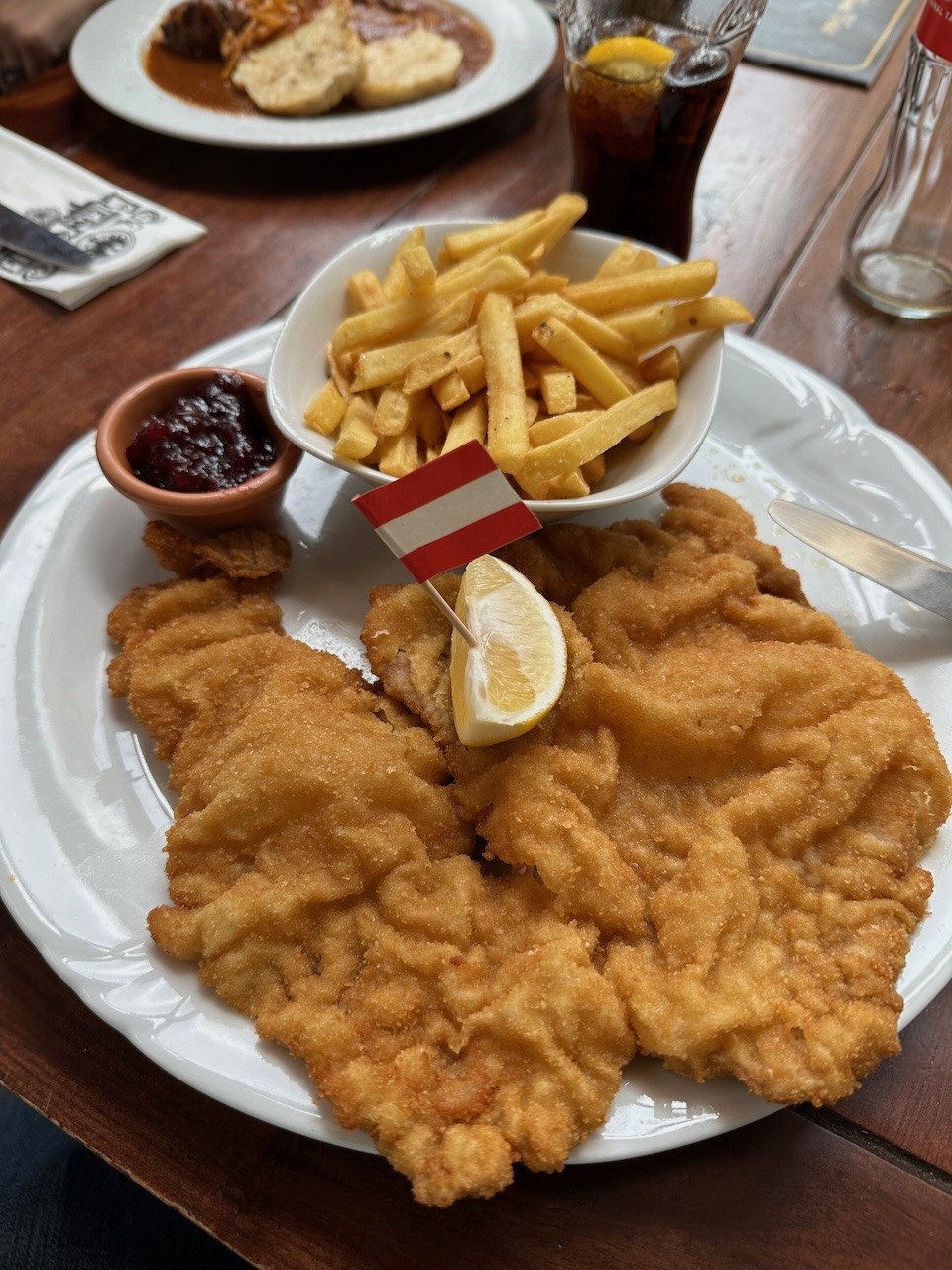
Vienna Shopping Guide
Vienna offers everything from traditional Viennese porcelain to high-end luxury shops selling international brands. It is important to note that most shops, including grocery stores, are closed on Sundays in Austria. Some popular shopping areas in Vienna include:
-
Kärntner Straße (Innere Stadt): Located in the heart of Vienna's Innere Stadt (1st district), Kärntner Straße is a bustling pedestrian street lined with a mix of international brands, upscale boutiques, and souvenir shops. It runs from Stephansplatz to the Vienna State Opera, making it a central hub for shopping and dining.
-
Graben and Kohlmarkt (Innere Stadt): Adjacent to Kärntner Straße, Graben and Kohlmarkt are elegant streets known for their high-end fashion boutiques, luxury brands including Louis Vuitton, and traditional Viennese cafes. These areas are popular for shopping in a historic setting near St. Stephen's Cathedral.
-
Mariahilferstraße: Mariahilferstraße is Vienna's longest and busiest shopping street, located in the 6th and 7th districts. It offers a wide range of shops, including Austrian department stores like Peek & Cloppenburg, as well as international chains and local boutiques. Mariahilferstraße is also known for its lively atmosphere and diverse dining options.
Naschmarkt
Naschmarkt is Vienna's most famous market, offering a vibrant mix of approximately 120 stalls selling fresh produce, spices, gourmet foods, and international cuisine. It is also a great place to find antiques and unique souvenirs. Naschmarkt is closed on Sundays.
Christmas Markets (Christkindlmarkt)
Vienna's Christmas markets are renowned for their festive atmosphere, traditional crafts, festive foods and treats, drawing in visitors from around the world during the holiday season. Many markets are set against the backdrop of historic landmarks such as Rathausplatz, Schönbrunn Palace, and Belvedere Palace, adding to their enchanting ambiance. The most famous of Vienna's Christmas markets is the Viennese Dream Christmas Market. Located in front of Rathausplatz (Vienna's City Hall), this market is one of the largest and most famous Christmas markets in the world, offering a wide range of crafts and food stalls. On Fridays, Saturdays, and Sundays, the air fills with the melodious sounds of choirs performing classic Christmas carols, adding to the festive spirit.
Visitors can browse through a wide array of handcrafted gifts and decorations, including wooden toys, glass ornaments, ceramics, and textiles, showcasing traditional Austrian craftsmanship. Visitors can also indulge in traditional Austrian treats such as roasted chestnuts (Maroni), gingerbread (Lebkuchen), and Austrian pastries like Kaiserschmarrn and strudel. A highlight of the markets is the aromatic mulled wine, called Glühwein, often served in decorative mugs.
Most of the Christmas markets start in mid-November and run through at least December 23rd of each year. Additional information about the Christmas markets in Vienna, including the dates and locations, can be found on Austria's Official Travel Portal website.
Easter Markets (Ostermärkte)
Vienna's Easter markets are vibrant celebrations of springtime and Easter traditions, offering a festive atmosphere with colorful decorations, seasonal crafts, and food. Decorated Easter eggs are a central feature, ranging from hand-painted traditional designs to artistic and innovative creations by local artisans.
Similar to Christmas markets, Easter markets in Vienna showcase a variety of handcrafted items such as wooden toys, ceramics, textiles, and jewelry, often with spring and Easter motifs. Vienna's Easter markets offer a variety of seasonal treats and specialties. These may include Easter pastries, such as Osterpinze (sweet Easter bread), as well as traditional Austrian desserts and cakes.
One of the most popular Easter markets is the Schönbrunn Palace Easter Market. Located in front of the beautiful palace, this market transforms the already stunning environment into a vibrant festival of spring. As you wander through the elegantly arranged stalls, the grandeur of Schönbrunn Palace provides an unforgettable backdrop, making it a must-visit destination for both locals and tourists alike during the Easter season.
Easter markets typically begin approximately two weeks before Easter and run through Easter Monday. Additional information about the Easter markets in Vienna can be found on the Visiting Vienna website.
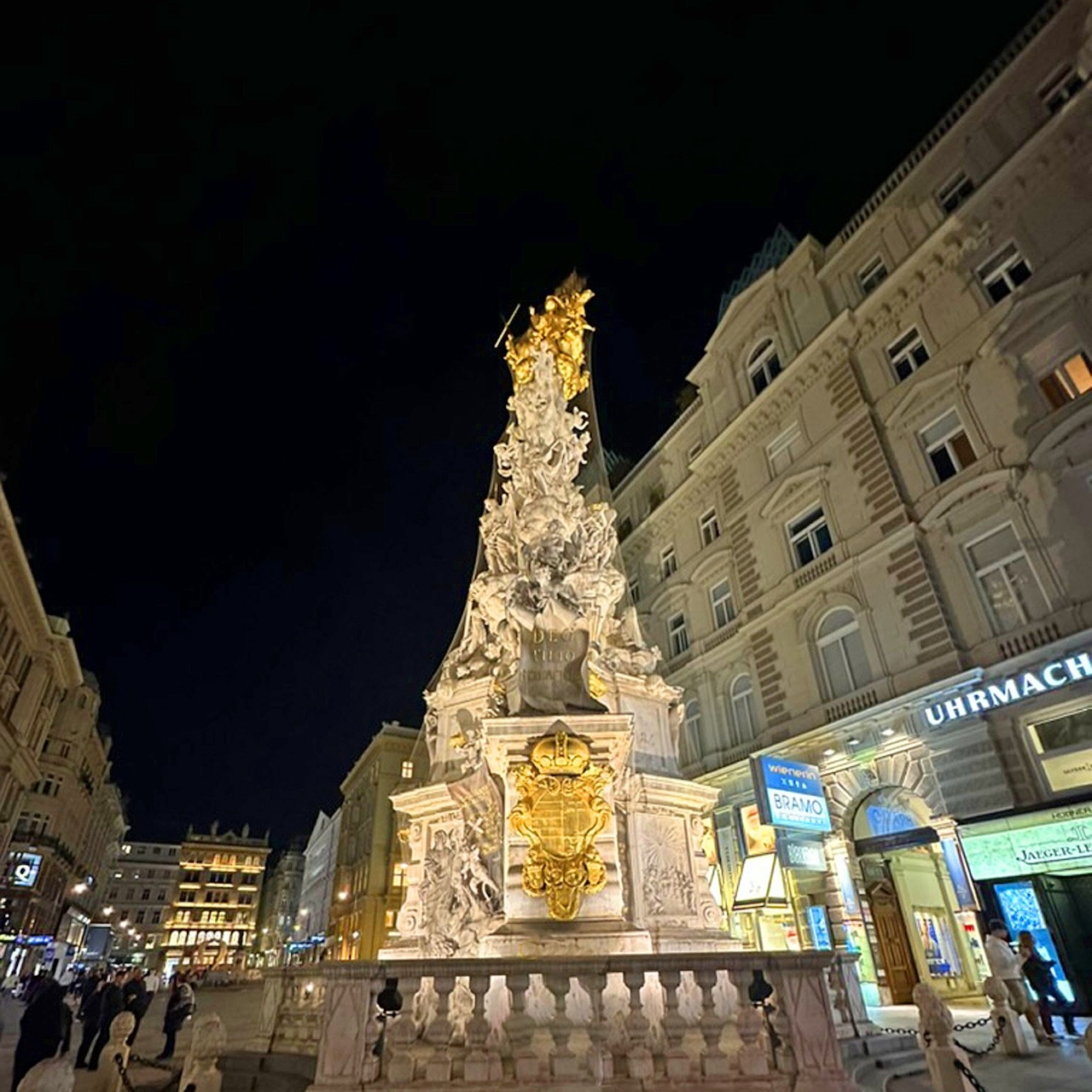
Vienna Travel Guide: Transportation
Vienna, the elegant capital of Austria, can initially seem overwhelming to visitors due to its size and numerous districts. However, the city has an efficient public transportation system that provides a convenient way to discover its array of neighborhoods and attractions. Utilizing navigation aids like Google Maps can greatly enhance the ease and efficiency of navigating Vienna's diverse cityscape.
Airport:
Vienna welcomes visitors through a main airport, easily connected to the city center.- Vienna International Airport (Flughafen Wien-Schwechat) is the largest and busiest airport in Austria, serving as the primary gateway to the city.
- Vienna Airport is located about 11 miles (18 kilometers) southeast of Vienna's city center in Schwechat. It is well-connected to the city center and surrounding areas by various transportation options, including the City Airport Train (CAT), S-Bahn (commuter rail), buses, and taxis.
Transportation To/From Airport:
- City Airport Train (CAT): The CAT provides a non-stop connection between Vienna Airport and Wien Mitte station in the city center, with a travel time of approximately 16 minutes. More information about CAT can be found on the Vienna Tourist Board website.
- ÖBB Express Train S7: The rapid transit railway line S7 departs from Vienna Airport every 30 minutes, stopping at two centrally located stations: Wien Mitte and Wien Praterstern. The S7 line offers convenient transfers to Vienna's rapid transit and subway network, with the journey to Wien Mitte taking approximately 25 minutes and to Wien Praterstern about 30 minutes. Additional information on the S7 line can be found on the Vienna Tourist Board website.
- Taxi: Taxis are available at Vienna Airport, providing direct transportation locations within the city center. You can expect the cost of a taxi to be around €40-70.
- Rideshare Apps: Both Bolt and Uber operate in Vienna. Prices for rideshare services are generally on par with traditional taxis. However, it is important to note that rideshare vehicles cannot linger at taxi stands or directly by the curb, so you may need to allow extra time for your ride to arrive after booking it at the airport.
Local Transit:
Navigating Vienna is best done on foot; however, some attractions, such as Schönbrunn Palace, do require you to take public transportation to reach them as they are outside of the Innere Stadt.
If you are planning on using public transportation with some frequency during your time in Vienna, then purchasing a ticket valid for 24-, 48-, or 72-hours may make the most sense. These tickets can be used on both the U-Bahn and the trams in Vienna. Additional information about fares can be found on the Vienna Tourist Board website.
The main means of public transportation in Vienna are outlined below.
- Trams: Vienna's trams, also known as streetcars, are an integral part of the city's public transportation system, offering an efficient and scenic way to navigate the city. Vienna boasts one of the largest tram networks in the world, with 28 lines covering more than 100 miles (161 kilometers). This extensive network ensures that most parts of the city are easily accessible by tram. Some key tram lines include the 1, 2, D, and 71, which circle the city's historic Ringstraße, providing convenient access to many of Vienna's major landmarks. Stops are clearly marked, and trams are equipped with electronic displays and announcements in both German and English, making navigation straightforward for non-German speakers.
- U-Bahn (Subway/Metro): The Vienna U-Bahn consists of five lines (U1, U2, U3, U4, and U6) covering approximately 51 miles (83 kilometers) and serving 98 stations. This extensive network ensures that most parts of the city are within easy reach. Key interchange stations, such as Karlsplatz, Stephansplatz, and Westbahnhof, connect multiple lines, facilitating easy transfers and access to major attractions. Trains run frequently, typically every 2-5 minutes during peak hours, making the U-Bahn a reliable and time-efficient mode of transportation. Stations and trains are equipped with clear signage, electronic displays, and announcements in both German and English.
- Rideshare Apps: As previously mentioned, both Bolt and Uber operate in Vienna. Rides can be easily requested from their respective apps. Rideshare apps are great for travelers concerned about the language barrier, those who are traveling to destinations within Vienna that are not as readily serviced by other public transportation methods, and/or when traveling with luggage.
- Taxis: Taxi stands are readily available throughout Vienna, making it convenient for residents and visitors to access taxi services. These taxi stands are typically located at key locations such as train stations, major squares, tourist areas, and hotels. However, we did not have the best experience with taxi drivers in Vienna and would not recommend that you take one - unless that is your only option. In our experience, taxi drivers do not like to drive to locations outside of the Innere Stadt and one taxi driver actually refused to drive us to our hotel - taking us instead, only part way.
More information regarding public transportation in Vienna can be found the Vienna Tourist Board website.
Local & Long-Distance Trains:
Train Stations
In Vienna, there are a few major train stations that serve as key transportation hub for the city. Some of the most common train stations for visitors to Vienna are below.
Wien Hauptbahnhof (Wien Hbf or Vienna Central Station)
- The main railway station in Vienna, Wien Hbf offers extensive domestic and international connections, including high-speed trains (ÖBB Railjet and ÖBB Nightjet) to major cities such as Salzburg, Munich, Budapest, and Prague.
- Regional express trains to nearby Bratislava, Slovakia also leave from Wien Hbf. The ride takes 59 minutes, making for a great day-trip.
- Wien Hbf is well-connected to the U-Bahn (U1), trams, and buses.
Wien Westbahnhof (Vienna West Station):
- Wien Westbahnhof primarily serves regional and national trains, with connections to western Austria and destinations like Linz, Salzburg, and Innsbruck.
- Wien Westbahnhof is located in the Neubau district, close to the shopping street Mariahilfer Straße.
- It is connected to the U-Bahn (U3 and U6), trams, and buses.
Wien Meidling:
- Wien Meidling is a major hub for regional and long-distance trains, including those traveling to the south of Austria and beyond.
- As the name suggests, Wien Meidling is located in the Meidling district, southwest of the city center.
- It is connected to the U-Bahn (U6), trams, and buses.
Wien Mitte (Vienna Middle Station):
- Wien Mitte is an importation station for regional train services, especially the S7 line and City Airport Train (CAT) both of which run to Vienna Airport.
- Wien Mitte is centrally located in the Landstraße district.
- Wien Mitte is connected to the U-Bahn (U3 and U4), trams, and buses, as well as the City Airport Train (CAT).

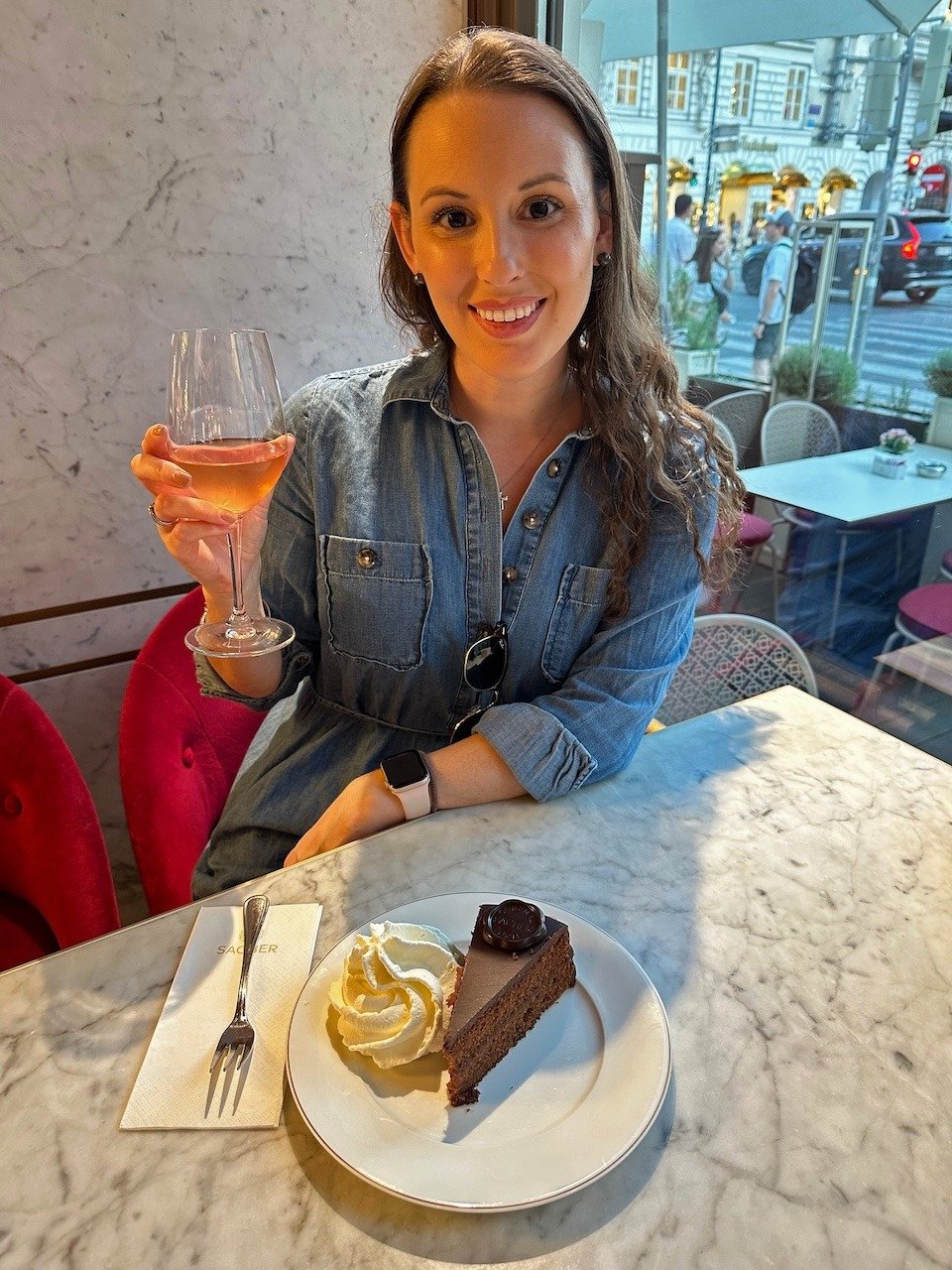

Our Take on Vienna
This might surprise our fellow Jetsetters, but we actually did not love Vienna. However, it is a popular travel destination, so it is important for us to share our experience with our readers. We are not going to sugarcoat it: Vienna is very expensive and busy. A classic rebuttal might be, "well, so are most capital cities in Europe," and that is a fair remark. Yet, the high prices in Vienna caught us off guard. From hotel accommodations to dining out, the prices were consistently steep.
To save some money, we opted to not stay in the Innere Stadt, but instead stay a 20-minute walk away at The Harmonie Vienna, BW Premier Collection. While our hotel room was fine and the hotel's included breakfast was a lovely amenity, in retrospect, spending more money for a more centrally located hotel might have enhanced our time in Vienna. The mass transit in Vienna was not as well connected as in similarly-sized cities, and while there was a nearby streetcar line, it was often more efficient to walk to the Innere Stadt, making it more challenging to pop back to the hotel midday.
Additionally, we found the food underwhelming—Austrian cuisine, in general, is not anything to write home about, except perhaps for the Sachertorte. While we tried various local dishes, many of them were heavy and lacked fresh vegetables. (Vienna is very much a meat and potatoes kind of city.) The café culture, while charming in theory, was often marred by poor service and the pervasive smell of cigarette smoke. Despite the 2019 ban on indoor smoking, the city's open-air spaces, from the bustling streets to cozy café terraces, seemed to be a haven for smokers.
Moreover, we found the people to be less friendly than expected. There was a certain aloofness in many interactions and even downright rude behavior on occasion. This experience left us feeling alienated; a stark contrast to the warm receptions we have encountered in other nearby cities such as Salzburg, Budapest, and Bratislava.
Now, do not get us wrong—Vienna is beautiful, truly beautiful, with grandiose boulevards and magnificent buildings that tell tales of a rich imperial past. Strolling through the city, we were constantly in awe of its architectural splendor. Its art museums are second to none, housing masterpieces that span centuries and genres. The Kunsthistorisches Museum, in particular, left us spellbound with its vast collection. The crowning jewel of our Vienna visit was undoubtedly the Imperial Treasury. It is a breathtaking collection that outshines even the British Royals' treasures in the Tower of London, putting on full display the incredible riches and might of the Habsburg empire with its assortment of opulent crowns, scepters, and a dazzling array of gems.
Vienna's historical and cultural significance is undeniable. The city is a haven for art and history lovers, offering unparalleled experiences in its museums and palaces. Despite our mixed feelings, we can still appreciate the city's undeniable charm and the unique experiences it offers. For travelers prepared for the costs and cultural differences, Vienna can still be a fascinating destination.
Vienna Neighborhoods
Innere Stadt (1st District)
The Innere Stadt, Vienna's 1st District, is the historic and cultural heart of the city. Enclosed by the grand Ringstraße Boulevard, this area is home to many of Vienna's most iconic landmarks and attractions. St. Stephen's Cathedral, with its stunning tiled roof and impressive spire, stands as Vienna's most recognizable landmark and the center of the city. The sprawling Hofburg Palace, once the imperial winter residence of the Hapsburgs, houses the Imperial Apartments, the Sisi Museum, the Imperial Treasury, and the National Library. The Vienna State Opera, one of the world's leading opera houses, is renowned for its exceptional performances and opulent interior. Art enthusiasts will find the Albertina Museum and Kunsthistorisches Museum's extensive collection of art particularly captivating. Additionally, the Spanish Riding School, famous for its Lipizzaner stallions, offers classical dressage performances and training sessions.
The Ringstraße, a grand boulevard encircling the district, is lined with architectural masterpieces, including the Parliament Building. For shopping and dining, the pedestrian streets of Kärntner Straße and Graben are packed with high-end boutiques and international brands. Historic cafés such as Café Sacher and Demel offer traditional Viennese coffee and pastries in charming, historic settings.
For many visitors, the Innere Stadt is the best place to stay in Vienna. Its central location means being within walking distance of many major attractions, allowing easy access to landmarks, museums, shopping streets, and dining options, which makes sightseeing and exploration incredibly convenient.

Landstraße (3rd District)
Vienna's Landstraße (3rd District) is home to the Belvedere Palace, featuring an extensive art collections and beautiful gardens. The Schlossquadrat, also in the area, is a charming ensemble of Baroque buildings, houses, boutiques, galleries, and restaurants, providing a glimpse into Vienna's historical and artistic heritage.
Stadtpark, one of Vienna's largest public parks, is located in Landstraße.
For tourists, Landstraße offers a central location with easy access to transportation hubs like Wien Hauptbahnhof (Vienna's Main Train Station), making it convenient for exploring the city and accessing other districts. The district's mix of historical sites, green spaces, shopping streets like Landstraßer Hauptstraße, and cultural attractions make it a good place to stay for visitors looking for a well-rounded Vienna experience.
Neubau (7th District)
Neubau, Vienna's 7th District, is a vibrant and trendy neighborhood that encapsulates the city's artistic flair and modern vibe. At its heart lies the MuseumsQuartier, one of Europe's largest cultural complexes, hosting museums, galleries, and cultural institutions.
Strolling through Neubau's picturesque streets, one encounters Spittelberg, a charming area characterized by narrow cobblestone lanes, historic buildings, and cozy courtyards. This artsy quarter is dotted with boutique shops, art galleries, quaint cafes, and artisanal shops, creating a vibrant and creative atmosphere. Mariahilfer Straße, Vienna's longest shopping street, runs through Neubau, offering a diverse array of shops, department stores, boutiques, and dining options, making it a bustling hub for shoppers and foodies alike.
Additionally, Neubau is home to Vienna's Westbahnhof train station, facilitating easy access to regional and international train services, making it a convenient base for exploring not just Vienna but also other parts of Austria and beyond. The district's lively culinary scene, with trendy cafés, bars, restaurants, and clubs, further adds to its appeal, offering a diverse range of cuisines, drinks, and entertainment options. Overall, Neubau is a desirable place to stay for tourists seeking a contemporary and vibrant experience in Vienna.
Favoriten (10th District)
Favoriten, Vienna's 10th District, offers a dynamic and diverse urban experience, making it an attractive choice for visitors on a budget or those not planning to stay in Vienna for an extended period of time. The district is anchored by Wien Hauptbahnhof (Wien Hbf), Vienna's main train station, providing excellent connectivity to regional and international destinations, making it a convenient transportation hub for travelers coming in and out of the city. This accessibility is especially beneficial for those with limited time in Vienna or looking to explore other parts of Austria and beyond.
The district's modern infrastructure and developments around Wien Hauptbahnhof include shopping centers, restaurants, and hotels, catering to the needs of budget-conscious travelers and providing amenities for a comfortable stay.
Hietzing (13th District)
Hietzing, Vienna's 13th District, is a charming area known for its elegant residential neighborhoods, green spaces, and cultural attractions. One of its most famous landmarks is Schönbrunn Palace, a UNESCO World Heritage Site and former imperial summer residence located in the heart of Hietzing. The palace, with its stunning Baroque architecture, vast gardens, and rich history, is a must-visit for tourists exploring Vienna's historical treasures. Additionally, Hietzing offers a peaceful atmosphere with tree-lined streets, parks, and cultural institutions such as the Tiergarten Schönbrunn. The district's blend of historical charm, natural beauty, and cultural richness makes it a delightful and rewarding place to visit in Vienna.
Hietzing is a lovely district in Vienna with its elegant residential areas, cultural attractions, and the iconic Schönbrunn Palace. While it offers a peaceful atmosphere and proximity to these attractions, it may not be the most central location for visitors who want easy access to Vienna's bustling city center and major tourist sites. However, for those seeking a quieter and more relaxed environment, Hietzing can be a good option, especially if they plan to spend more time exploring the palace and other nearby attractions.

Day Trips from Vienna
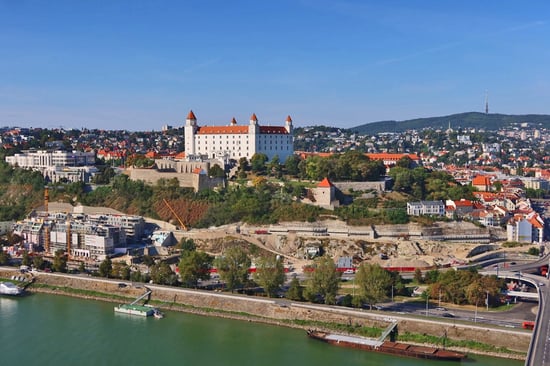
Bratislava
Vienna Travel Guide: Additional Resources for Visiting Vienna
Nearby Destinations
Looking for more Vienna content?
Check out the Jetset Seeker Blog!
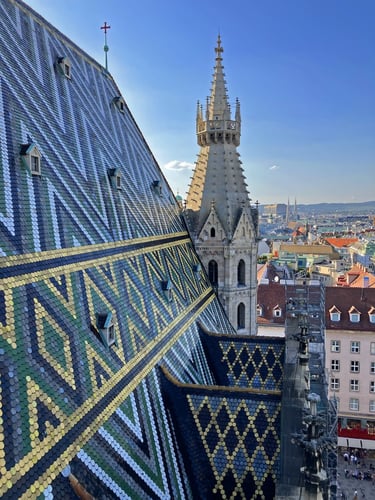
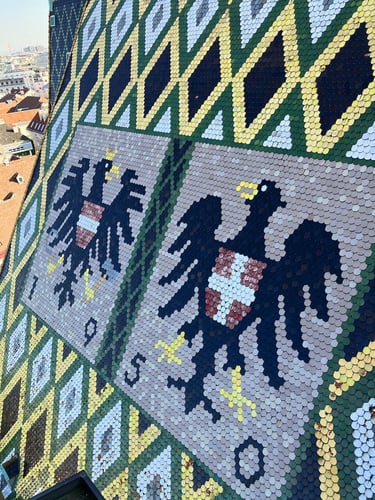





Our Vienna Travel Guide & Trip Planning Resources
Curious about the resources that shaped our trip to Vienna? Dive into the links below for additional insights and valuable information we used to plan our own trip.
Looking for more information on Austria? From when to visit, popular souvenirs, train information, and more, check out our Austria Travel Guide, linked below.
What other honeymooners say
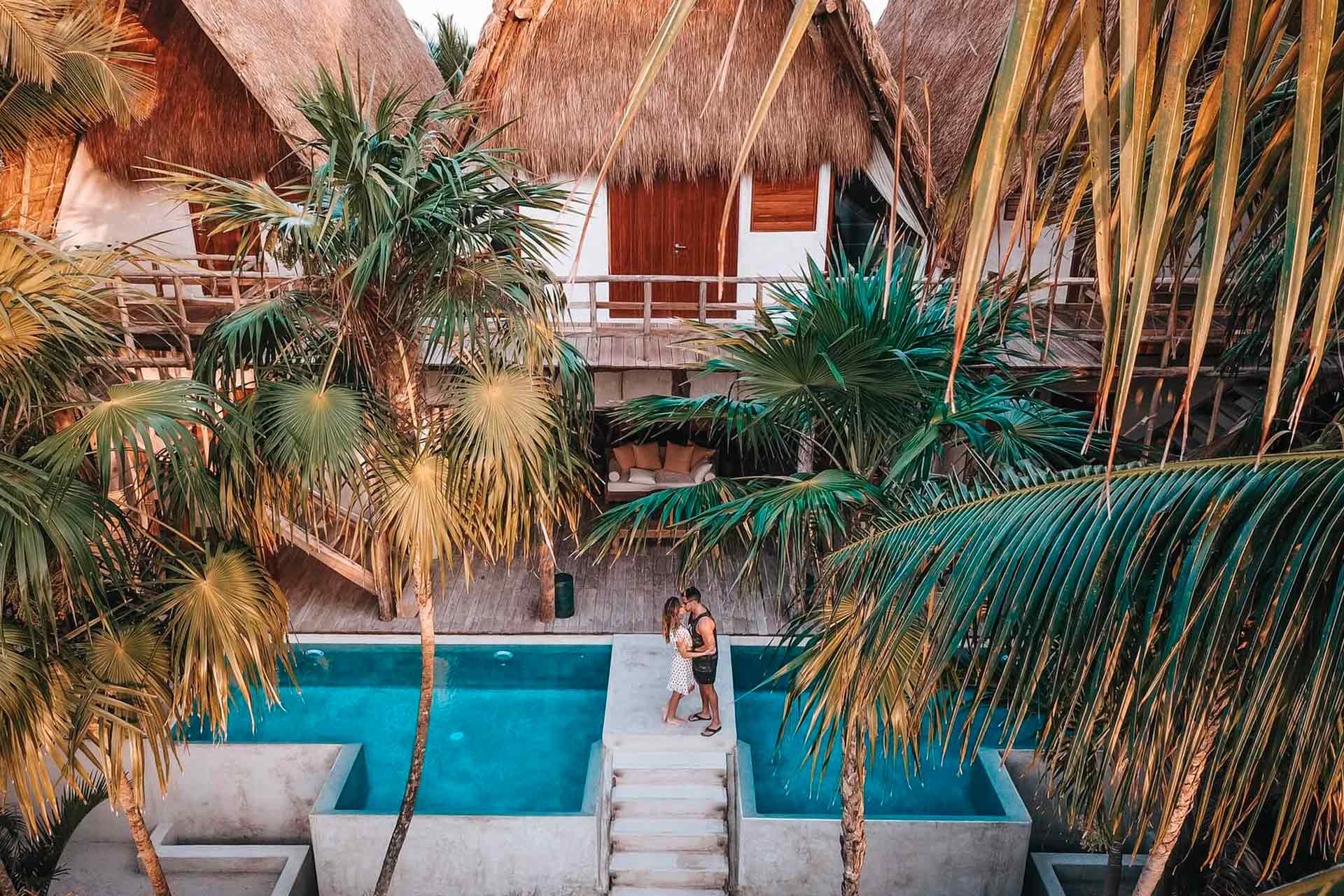
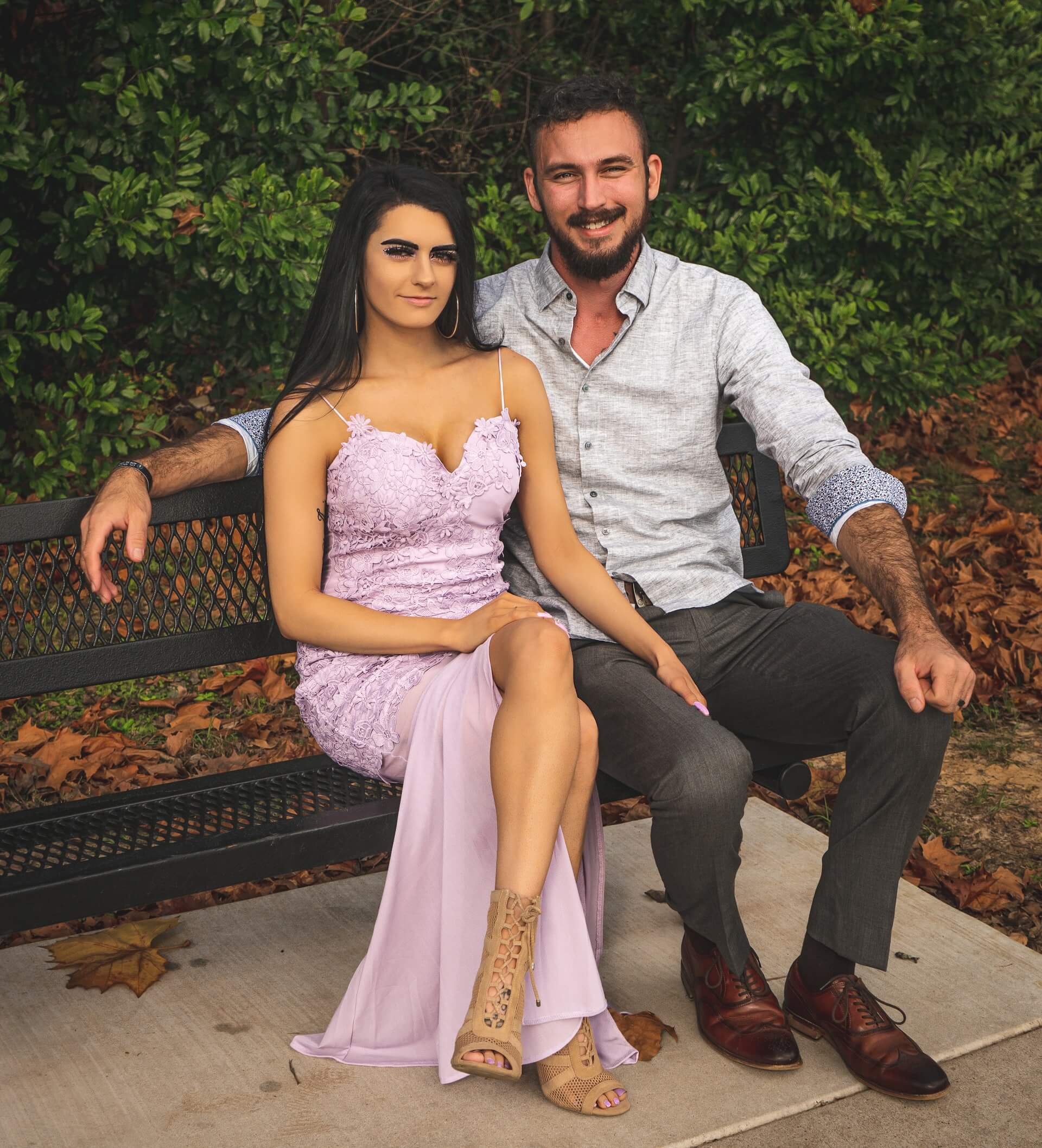
Laboris nisi ut aliquip ex ea commodo consequat. Duis aute irure dolor in reprehenderit in voluptate velit esse cillum dolore eu fugiat nulla pariatur. Excepteur sint occaecat cupidatat non proident, sunt in culpa qui officia deserunt mollit anim id est laborum.”
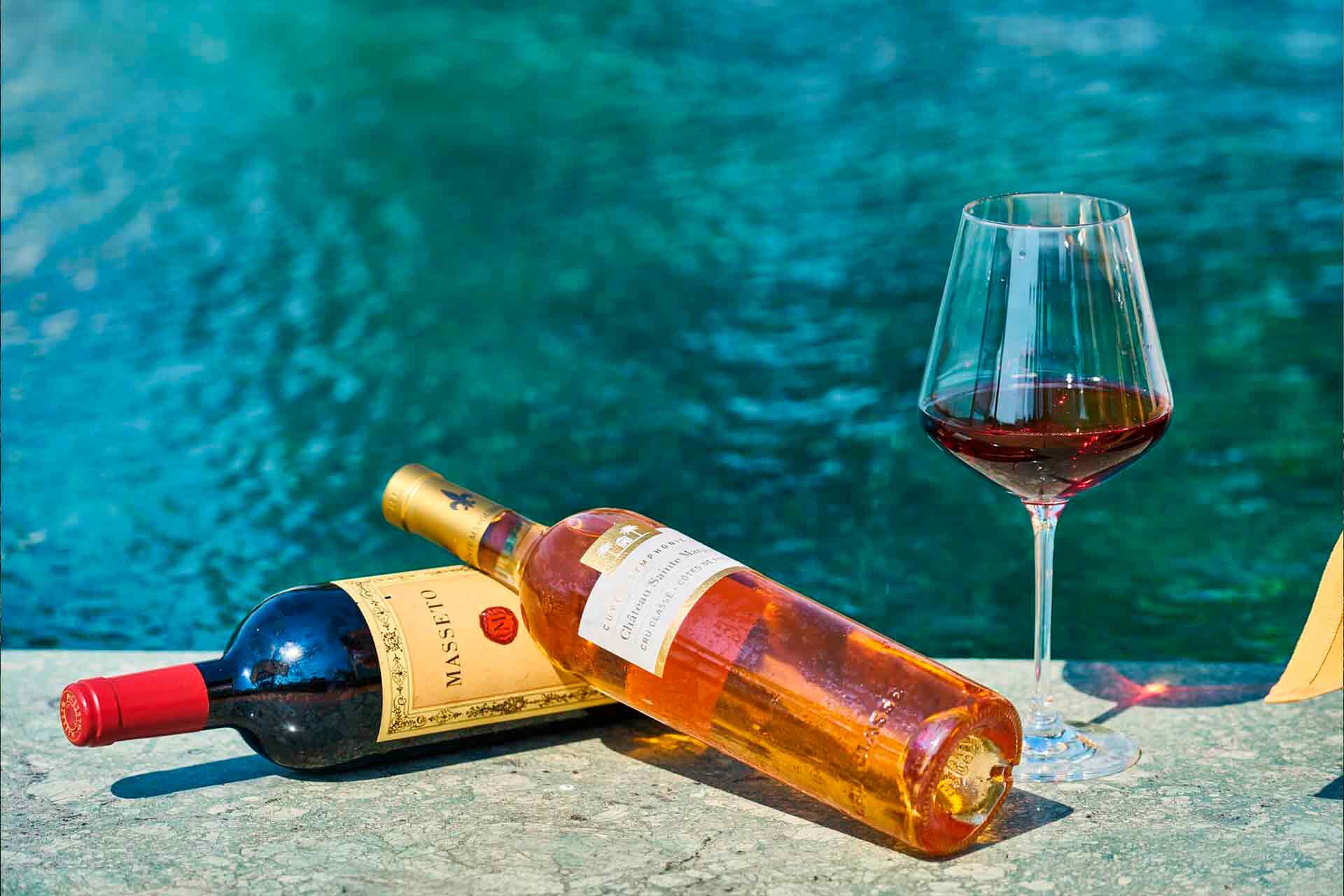
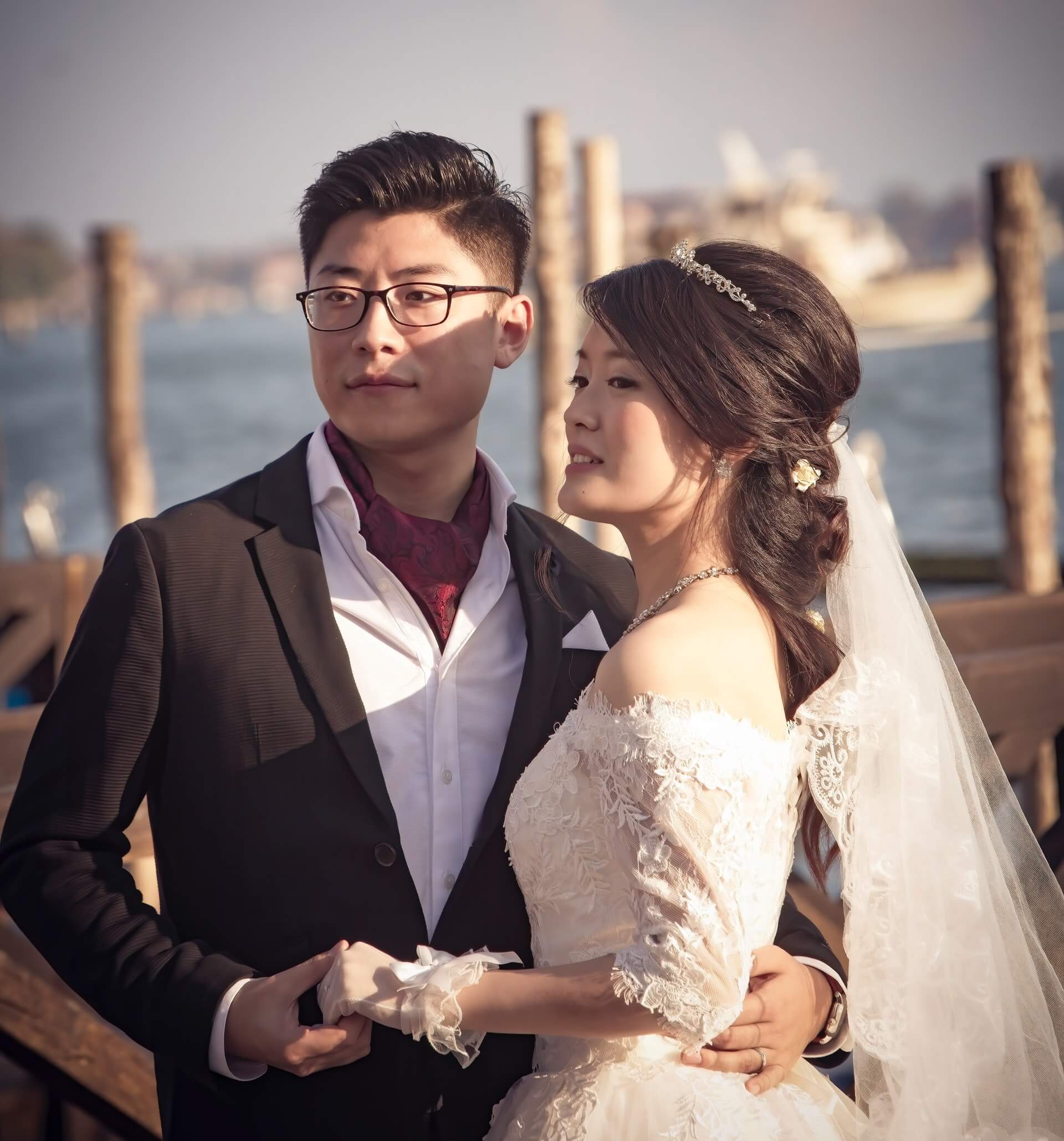
Laboris nisi ut aliquip ex ea commodo consequat. Duis aute irure dolor in reprehenderit in voluptate velit esse cillum dolore eu fugiat nulla pariatur. Excepteur sint occaecat cupidatat non proident, sunt in culpa qui officia deserunt mollit anim id est laborum.”
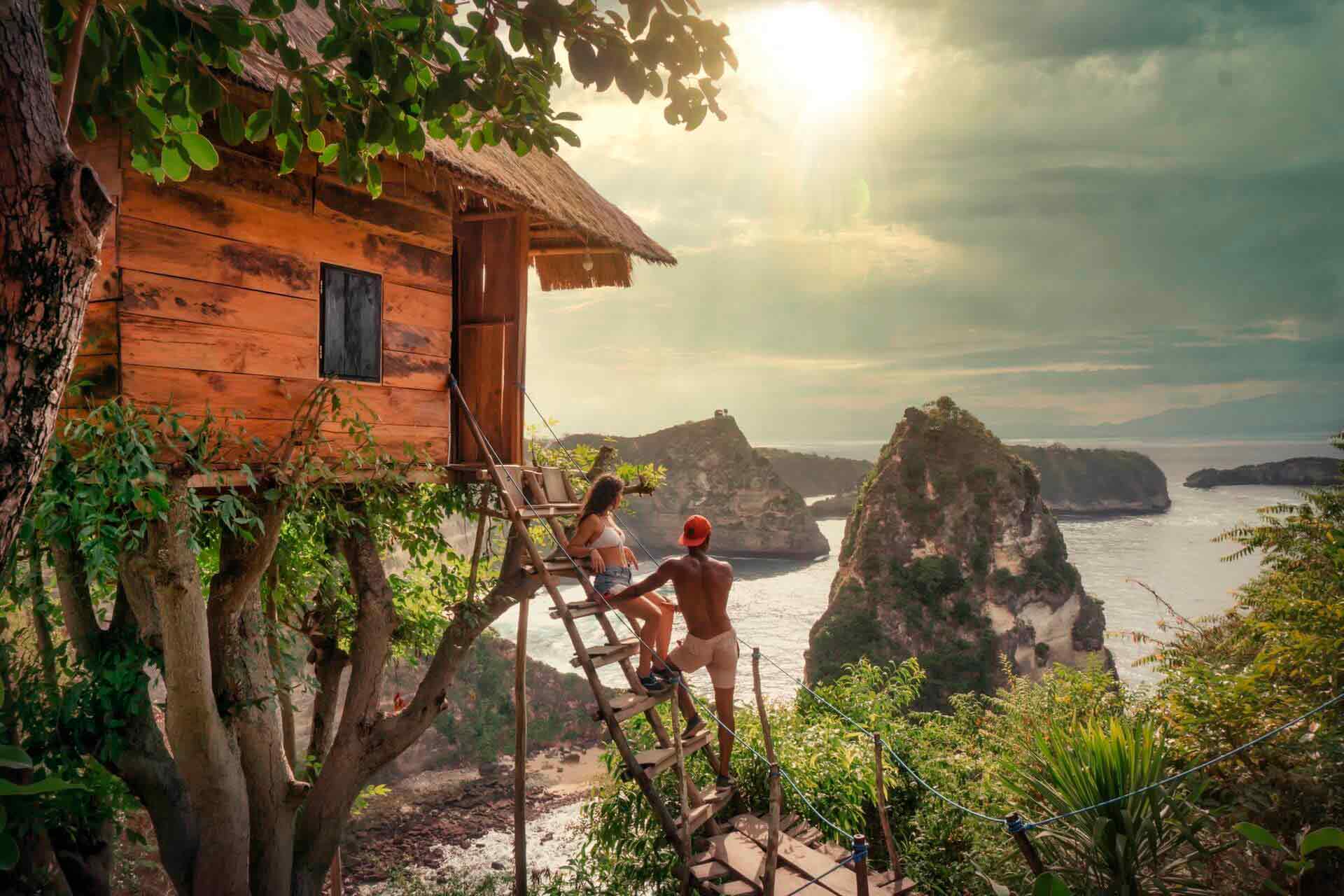
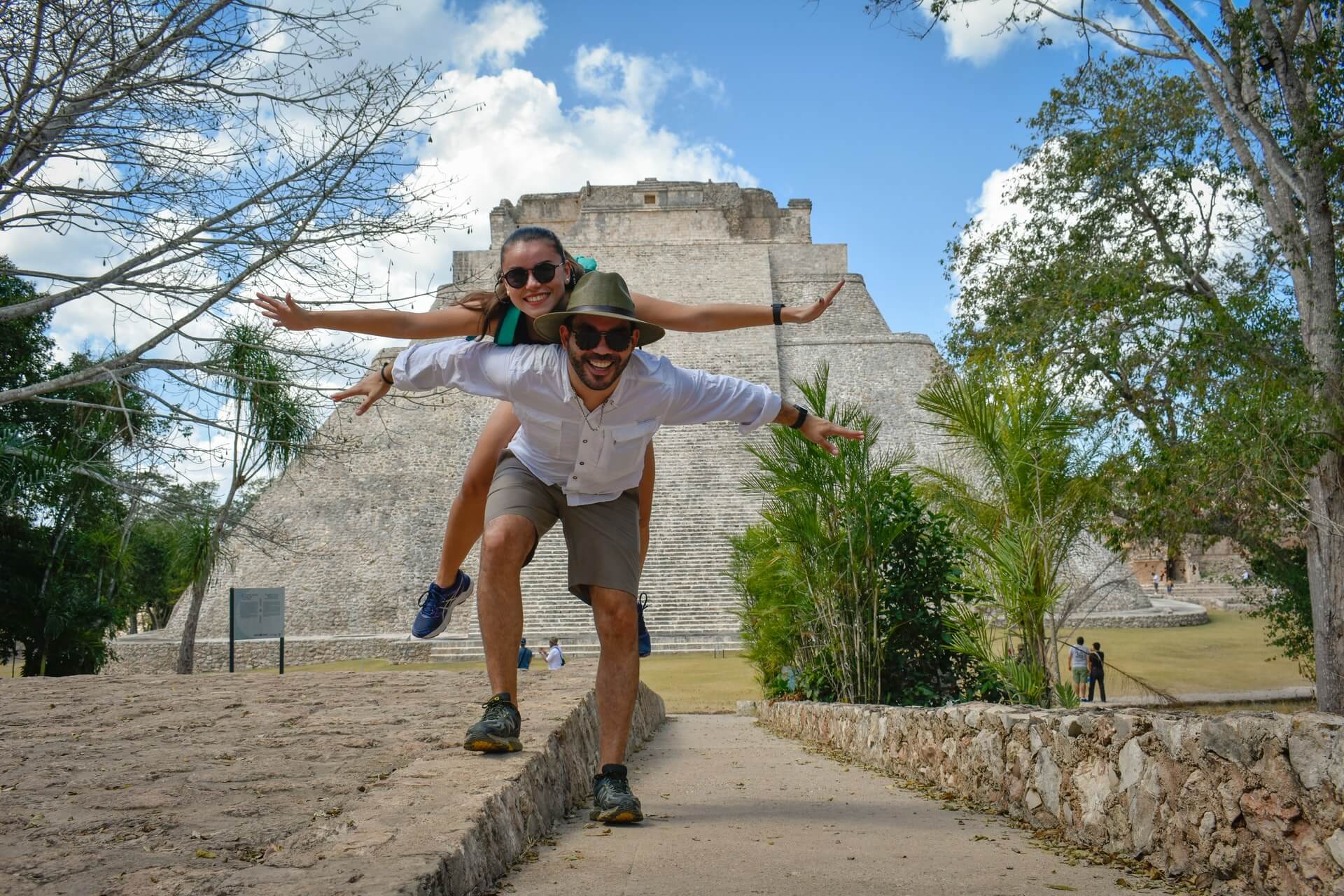
Laboris nisi ut aliquip ex ea commodo consequat. Duis aute irure dolor in reprehenderit in voluptate velit esse cillum dolore eu fugiat nulla pariatur. Excepteur sint occaecat cupidatat non proident, sunt in culpa qui officia deserunt mollit anim id est laborum.”
Tokyo Itineraries

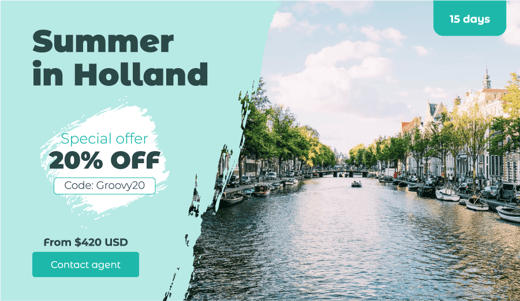
%20(1).png?width=3690&height=2079&name=Jetset%20Seeker%20Logo%20(Banner)%20(1).png)




